|
*every lovely person who's read this series of blogs[1]. Above: Around midnight ... serried traditional beach huts at Yport in Normandy. The Basque Country left us literally and figuratively hungry for more. For our next visit (and there will be one) we are going to have to step up our time allocation by an order of magnitude. And do a lot more research besides. Add on the same again for Catalunya and 6 weeks starts to look like a minimum baseline. Especially if we were to start in Oporto and work our way up the Douro! Now we had a day to get North, retrieve our battery powered VW, drop off the Mercedes Marco Polo, and have a last blast with the incomparable Ann and Craig, before doing the EV charge point hopscotch back to Calais. It always pays to break a day-long trek somewhere diverting and Shan and I had chosen ahead an attractive pitstop on our way to Saint-Romain. But first we had to traverse the ultimate spaghetti junction that had so daunted us on the way into Donostia. This time the traverse would be in reverse. We also decided to stay off the motorway to absorb the coastal scenery. Given the suspicion we now felt for the Mercedes satnav, and encouraged by Shan's bailing us out with her trusty Google-equipped iPhone, we decided to put her in charge of navigation. It was a good decision that played out with little fuss despite the driver (me) being uber suspicious of every change of direction (and there were many). Issigeac We had chosen Issigeac as one of the last few places for Kinks to experience an historic French village given that the last substantial stretch of the journey back to Calais would have to be undertaken in our Volksie EV. This meant stops for high speed recharging and these were really only reliably to be found on autoroutes. French autoroutes are excellent but, like freeways anywhere, can be quite boring. Our penultimate destination for the day was a medieval village that dates back to Roman times, located in the Périgord and is a commune of the Dordogne department. Apart from its antique charms, Issigeac is also home to a compact cornucopia of craft shops and the like ... ideal for those last-minute gifts to ferry home. It also has a reasonable choice of places to grab a bite, although this turned out to be irrelevant ... It always comes as a surprise how vast France actually is. Five hours are w-a-a-a-y too long for the venerable jollers to last between wees and teas so the odd Lidl or Carrefour car park along the way provided the facilities and food was bought to assuage the guilt of using the free lavs. So switching to a little retail therapy and sightseeing made a welcome break before changing drivers for the last hour-and-a-half leg of our journey for the day. Above, clockwise from top left: a typical medieval lane leading to the central square; a street of smart shops leads into the square bookended by a restaurant and a pillared covered market; The café was inviting but our needs had been fulfilled; A medieval doorway definitely not made for Shan; there are nooks and crannies and cobbled streets everywhere; probably the most splendid outdoor library we'd ever come across. Above, clockwise from top left: Just when you think you're shopped out - a tempting wine shop with the most attentive expert; another charming café; half-timbered buildings in the next two pics; this one's for me old mate Starry, let's see if he spots this and is able to solve the riddle; there are a lot of green shutters and awnings in Issigeac. Saint-Romain And so it was that Shan steered us expertly to her cousins' house where we reclaimed our car to begin what was to become a somewhat epic journey in our battery-powered odyssey. By now we should have been experts at planning an EV journey and we duly girded our loins for our Saturday morning departure. We were all set up for our last two days on the road and home was beckoning comfortingly. We had a full charge, good for 300 kms, and a hotel booked in Yport in Normandy 600 kms away. Six hours max. And, 'er, add another two hours' recharging. Leaving at 9AM, a 5PM check-in would be a doddle. Above (l to r): last night in Charente before our grand départ - atmospheric bar/restaurant, Barbacane, in Aubeterre run by a Dutchman named Jaap with a South London accent - lovely bloke, lovely food; We should have been enjoying this sunset in Yport, instead we had only recently regained the A28 in Normandy, still quite a way South of La Seine. Off we go We got there after 9PM. Problem #1: Massive downpour at Aires de Poitiers-Chincé on the A10. This was not anyone's fault but the process of standing in the torrential rain with half of the self-service process being conducted via a mobile phone with a touch screen being activated by random raindrops: MERDE! There was no one to help so we had to just persevere and start over and over again. I still don't know how we got it right but, if I have any advice for IONITY (an otherwise excellent service), for heaven's sake put your charge points under shelter. ONE DOES NOT HAVE TO STAND IN THE RAIN FOR PETROL OR DIESEL. AND THIS IS ELECTRICITY WE'RE TALKING ABOUT. We resumed our journey about 45 minutes later than we should have, soaked to the skin and feeling disgruntled. Imagine what that might have been like in midwinter! Problem #2: Our bad, but it was easily done, we missed the turn off the A10 onto the A28. French autoroutes are pretty unforgiving when you cock up (we'd discovered this in similar circumstances on the way down). The next exit was 20 km further on up the road. Problem #3: My bad. With hindsight the optimum decision would have been to return 20 km back down the A10 and resume our journey on the A28. It seemed such a long way around so I went for a cross-country dash towards Le Mans that was shorter. I hadn't counted on the number of towns and villages along my chosen route, all of which have 30 km/h (18 mph) speed limits. I do thoroughly approve of these limits and commend the French traffic authorities for taking this step but it wrought havoc with our ETA. Problem #4: My MOJO destroyed, as we were approaching Le Mans where we would need a battery top up, I elected to turn away from the city up the A11 towards Paris. The Aire de Villaines la Gonais was fine and we spent 55 minutes actually constructively charging. Problem #5: Because we'd travelled some way up the A11, I elected to continue the cross-country madness and take the shortest route back to the A28 near Gacé. Problem #6: We were back on track but now it was dark and the roads on the last stretch to Yport were narrow and winding. We'd already taken a call from the Hotel Normand, asking us if we were still coming. By this stage I was driving again and Shan assumed her most tactful counsellor tone to reassure them that we'd be taking up our reservation. Not sure how many calls took place between our EV and the hotel but we eventually arrived after 9PM absolutely starving only be told the hotel was no longer serving le souper. Our hearts sank, visibly enough for the receptionist to take pity and make other arrangements. Actually everything ended up brilliantly with three fish supper extravaganzas with cidre at Le Nautique 100 metres away. Result! And a little wine followed the cidre. The car had been happily hooked up for the night and looked as if we'd be fully charged by morning. Sated, we strolled along the sea front for a while, absorbing the atmosphere before retiring for a well-earned night's kip. Above: Fishing boats hauled up for the night, on the left with distant Fécamp in the background and on the right only the ghostly cliffs keeping watch. Above, (clockwise from top left): les belles après le petit déjeuner, ready for the day; a nostalgic shot of the town with the hill behind - if you look carefully the camping site becomes apparent and it was there that Shan and I had spent some great times in the past with our "Campy"; the beach huts the region is renowned for, now in glorious sunshine. Last leg Yport is possibly the smallest of these atmospheric Normandy seaside communities and an all too brief promenade après le petit déjeuner was a bittersweet farewell to mainland Europe before returning to the realities of everyday life (and Brexit). Even more essential given the continuing frisson of steering our EV over the remaining 570 km (360 miles) to our home in Oxfordshire. Actually, we needn't have worried (actually we didn't because the positive side of the technology was that one could keep an eye things remotely, via a smartphone). The Yport car park had replenished our batteries and the ongoing opportunities were on more familiar territory. Above (l to r): the edge of Yport and the cliffs that separate it from Fécamp; almost on the horizon you can just see the maritime traffic jam in the Channel roadstead, just over the horizon, England; final recharge in France - not that easy to find until you become aware that it is situated in the grounds of the Calais Holiday Inn, which is actually in Coquelles and very close to a large roundabout containing an imposing tunnel-boring machine/drill charmingly named "Virginie". When we approached the Eurotunnel, having been through it scores of times, it hadn't occurred to us that this would be a totally novel experience for Kinks. Not only was the car going on a train, but the train was going into the tunnel under the ocean. This was an altogether new experience during which she insisted on giving her full attention to our progress until we were well and truly sous La Manche[2]. The remainder of the journey was pretty uneventful apart from a brief interlude when I elected to top up our battery at Cobham Services to give us a bit of a safety margin. There are 6 Ionity chargers there, one of which was out of action. Not very far away there are a gazillion Tesla chargers dotted around Cobham. I was first in the queue for an Ionity charger to become available. There were soon a couple of Teslas circling but I thought common decency would prevail and they'd respect a first-come first-served discipline, so I waited patiently. Only for one of the Teslas circling to cut me up to get into a free bay, actually making it difficult for the departing Volvo to exit. This is the kind of behaviour that Melon Usk encourages. EVs are supposed to make the planet just a little more pleasant for its inhabitants, not encourage the sort of naked aggression of the world's Donald Trump clones. Last thoughts
Coming next
[Endnotes]:
0 Comments
*We're all "jollers" when we're having fun and enjoying life[1] Above: Perhaps a little less imposing than Siena's Piazza del Campo and its ongoing Palio horse race, San Sebastián's Plaza de la Constitución dates from 1817 and in its early days hosted bull fights but is now home to cafés serving, inter alia, pintxos (more of this later). If one peers closely at the balconies it is possible to see a numbering system played out above each door on all three sides (the horseshoe continues around to the left). We were told the numbering was so that bull-fighting fans[2] could rent a balcony to watch the "sport" below. Did anyone ever tell you that San Sebastián has the second highest number of Michelin stars in the world? We didn't visit any of them. Instead we pretty much focussed on pintxos (a.k.a. tapas) and an evening meal in the restaurant at our campsite. Thing is, the campsite was a little haven up in the hills above the city with just one setback - the only sensible way to get from it to the urban delights below was to avail ourselves of the free shuttle that took campers down the hill at 9, 10 and 11 am and back up again at 5, 6 and 7 pm. I guess we could've taken our own van but anyone who's navigated the complex plate of spaghetti that is the system of motorway interchanges that welcome a weary traveller to Donostia-San Sebastián (and seemingly the rest of North Western Spain) will gratefully accept the services of said shuttle. Apart from anything else, if Pintxos is what you're after, you're hardly going to drive home up the extremely labyrinthine and narrow roads into the hills after a skinful of delicious "local" wine. With a pretty decent small glass of Rioja or Ribera del Duero reserva topping out at around €4, and pukka sangria in abundance, and given the density of bars in San Sebastián's Old Town (Parte Vieja) and Gros, multiple establishments are all but compulsory. There are those who reckon that the de rigeur is one small glass of wine and one pintxo (small by definition) before moving on to the next bar. Apparently, some of the more hardened locals traditionally had up to 10 of these in an evening's pub crawl. Although I doubt they'd have used such a vulgar term for their perorations. Suffice to say that a lunch that starts at around 2PM and continues across a succession of bars would not be a great idea if one had to drive home afterwards. From previous experience in Spain, locals themselves do not slip from lunch into supper without some sort of siesta, even if it's just a bit of quiet down time between sessions. For them, play resumes at around 10PM and continues until heaven knows when. L'étranger (the outsider/el extraño/arrotza) might attempt to bridge that gap by ploughing on. I suppose it might be theoretically possible to stay the pace from 2PM to 9AM the next morning and the campsite shuttle "home". In my case this would end in almost certain death. Above: La Parte Vieja (the Old Town) still a way to go in the middle ground with our first destination in the Gros still another kilometre-and-a-half beyond that. Pintxos (should it be Pintxoak?[3]) What we were about to enjoy are more generally described in other parts of Spain as tapas. In the Basque Country the individual snacks can be incredibly imaginative and are known as Pintxoak. I am led to believe that the original term came from the Basque name for what we might call a cocktail stick. So, basically, each pintxo (pronounced something like "pincho" for Gringos) had to fit on to a toothpick, although this seems more recently to have been adjusted to "no bigger in size than a fist". I have to confess that I was on a mission to visit the "Pincho" bars of San Sebastián. I am not suggesting my companions were reluctant participants but perhaps they didn't share my obsession. After all, I had dragged them five-and-a-half kilometres on foot from the shuttle drop off at the foot of the Igara Bidea to the fag-end of the Gros to partake at a specific pintxo bar. The Gros being an urban district of Donostia (San Sebastián's other name) where the city runs out of road. As is the case with culinary culture anywhere in the world, it is often the emerging areas that are at the leading edge of foodie trends, while the older (apparently more attractive) parts rest on their laurels. I had done my research and, in my head anyway, had plans to start at the furthest point and work our way back to the shuttle stop (yes another 5.5 km) taking in perhaps half a dozen pintxoak bars with a small glass of wine and one pintxo at each venue before moving on to the next. This was de rigeur, I believed, but, as it turns out, de trop for my lovely companions. The Bergara Bar was to be the first stop on our barra arakatzea[4]. My mind had scheduled La Vina back in the old town to be our last oasis before the long trek back to the shuttle. As we were nearing the Bergara I sensed a hint of resistance to our two days in San Sebastián becoming one long bar crawl. "It's a gorgeous city, when do we get to see the rest of it?" started to become a recalcitrant refrain. It was a reasonable enough question and one that kind of gelled when the charming waiter allocated us a prime (seated) spot outside the Bergara. We watched the local cognoscenti/ezagutzaile drift in and out for their obligatory 1:1 glass:pintxo and that became entertainment in itself. Besides, the food was pretty spectacular and adventurous, too. So I'm afraid we behaved in a completely uncouth manner and remained there for at least 3 glasses and definitely more than 3x3 delicious pintxoak. Below: (top row, l to r) armed with a rather splendid sangria each, some of our party were ready to settle in; our friendly waiter attempting to sneak up unobtrusively; and then the full charm offensive, although I did slightly wonder about the hand gesture; (second row) a cornucopia of pre-prepared pintxoak; (third row, l to r) the first three were samples of made to order pintxoak from seafood to a mini burger and the last did not come from Bergara and is a fabled slice of burnt cheesecake. Above, (bottom row l-r) on our way back from the Bergara Bar, Kerry was impressed by the catch of the day in the river separating the Gros from the old town - I suspect the fisherman was flattered by the knowledgable attention, too, Kinks having represented South Africa internationally; the fabled La Viña Bar & Restaurant in the Old Town and its Cocina de Carmen Jiménez; always packed. I was determined that our final pintxo of the day would be a dessert. More specifically a "burnt cheesecake" from a specific bar. My companions were unimpressed and wouldn't join me in shouldering my way to the counter at La Viña. Then Shan's curiosity got the better of her (it always does) and she came in for a peek. Another spoon was produced ... and then another for Kinks. I was a bit saddened at my diminished portion but also secretly felt vindicated. So much so that one of the first things I did when I arrived home was track down a recipe courtesy of Marti Buckley[5] and the home-cooked version was a roaring success. A wider perspective Above: a broader perspective from the top of Monte Igueldo on the Western side of the Bahía de la Concha, looking over the Isla de Santa Clara at the Parte Vieja and the Gros behind. On the left, alongside the old town, is Monte Urgull, which we will climb later. The twin beaches of Ondarreta and la Concha stretch away to the right, the Miramar Palace just visible in the trees behind the rocky outcrop that separates them On our second day in San Sebastián we were again delivered (a bit earlier this time) to the bottom of the Igara Bidea. An ongoing bus was mooted but I am glad we decided to walk to the bottom of the funicular that has been plying its way up Monte Igueldo for more than 100 years. This gave us a chance to take in the burgeoning modern university quarter of the city. Spain has become a pioneer of modern design from Antoni Gaudi's revolutionary creations in Catalunya a century ago to Frank Gehry's far more recent Guggenheim in Bilbao in the Basque Country. Donostia-San Sebastián is no slouch and is littered with modern buildings, some of them huge and proud and many of them directed at higher learning and the arts. So we were strolling down Tolosa Hiribidea admiring the modern facilities for tertiary education and I was taken back to my own days as a student in Durban, South Africa when Anti-Apartheid was high on our agenda. Lo-and-behold, not a lot had changed, apart from the fact that I couldn't understand the posters. I became a little obsessed with one of them, see below, and struggled with the translation, being written in the Basque language. Across the boulevard was the Musikene building, housing the Higher School of Music of the Basque Country, that certainly demands the stroller's attention. Above: (top) the Musikene building, bedecked in black and gold; (bottom, l to r) the poster here, roughly translated[5] from the Basque language, reads "Youth independence, October 12, Anti-Hispanic day"; the bottom station of the more than 100-year-old funicular- interesting to note the similar shades in the gold of the modern building and the stone of the early 20th century one. Yes, today was October 12 and many locals were soaking up the atmosphere of the public holiday. Possibly even the students if our own anti-Apartheid protests in the sunshine were anything to go by. Returning to our stroll and our assignation with the funicular: two wooden carriages transport visitors up a cog railway from sea level to somewhere short of the 180 m summit. There is a permanent fair there and a rather stodgy Mercure Hotel that redeems itself a bit with a more plebeian coffee bar and terrace that is open to all-comers. By far the best thing about the top of the mountain is the view back over San Sebastián and its Bahía la Concha/Kontxa. Upon our descent, my legs were taking strain so I elected to circumnavigate the bay by walking along the promenade. Shan had other ideas: "Kinks and I decided to walk the entire length of both beaches to old town. "After that we had pinchos and sangria in Constitution square with the delightful Mohamed as our waiter. "Then we walk up millions of steps and slanty slopes to look at Jesus before heading back down to the aquarium. It’s Spanish Day so all the Spaniards are out and walking around the promenade" Above, clockwise from top left: Having dipped her feet in the Med in Collioure, Kinks dips her hands in the unseasonably warm Atlantic; the pavilions viewed from the beach took us back to the fading Victorian promenades of the Durban beaches of our youth; a view of our post-prandial challenge, scaling Monte Urgull; but first the intrepid beach walkers required feeding and watering. The pintxoak in the Plaza de la Constitución had to be tried but were not much of a match for the more casual bars in the back lanes. A couple of decent potato omelettes did fortify us for the ascent of Monte Urgull, however, where the views were again splendid, this time gazing from East to West. We half-heartedly contemplated returning to our shuttle "terminus" by bus but we were tired and it seemed complicated so we limped back to the shuttle at 6PM and met our driver with gratitude. We'd had a thoroughly grand day but our tanks were empty. Luckily the fridge in our van back at Camping Igara was well stocked with before dinner wine/antes de la cena/afaldu aurretik. We had a competent paella in the restaurant and had to try the hilltop version of burnt cheesecake - not a bad attempt but rather over-embellished with dense whipped cream and a caramel sauce. Above, l to r: Shan got to look at Jesus planted, as he was, atop the medieval fort; Kinks figured the castle and Jesus needed a bit more protection. Above: Just had to square the circle on Bahía de la Concha. Above: Donostia-San Sebastián really is quite photogenic so I won't make excuses for being shutter happy.  [5]Afterword/Acknowledgement There are a couple of recently acquired Twitter friends without whom we'd have been grappling in the dark with this one. Initially there was Clive Wood (@Woody2402) who gave me the pointers to the Gros et al. He then introduced me to Marti Buckley (@martibk) and her wonderful book (alongside). Apart from enabling me to create my own La Viña Cheesecake, I was also introduced to assorted pintxoak, Lamb in Chilindrón Sauce and an authentic Basque Sangria (Zurrakapotea). These and other delights will be repeated on our Christmas menu and for many happy years to come. The other thing that Marti did for me was unlock a couple of mysteries of the Basque language without which I would still be struggling with any attempt at simple translation. Clive seems to hide his light under a bushel but his enthusiasm spills over into wine, Basque cuisine and recommending excellent books. Above: Alright, alright ... just one last snap to highlight the fact that this port city is surrounded by mountains - much as the Catalan Pyrénées-Orientales are omnipresent near the French-Spanish border on the Mediterranean, so are the Basque Pyrénées-Atlantiques on the Spanish-French border on the Atlantic.
And so it was, the following morning, we were to bid farewell to the delightful Isa and her Camping Igara and prepare to do battle, in reverse, with Spaghetti Junction (see intro). The end of the blog might seem a strange place for a description of our arrival at the campsite but the confused construction reflects a day of a long drive before becoming lost in the tiniest of narrow roads and wondering if we'd ever reach our destination. The Mercedes satnav became officially useless and it was a huge relief to almost happen upon our final destination. Not the least because Isa greeted us with a smile on her face and a prime slot for our van. She explained the shuttle service into town then introduced us to the restaurant. There we ordered spicy chicken legs for later (dinner in Spain is always at a civilised later hour that most of the world), giving us time for a relaxing glass of wine in the fading evening light over the surrounding hills and mountains. The spicy legs turned out to be delicious and more than plentiful and required more wine to wash them down. We were all set for the following two days of taking in the delights of San Sebastián without having to fire up our own vehicle even once. Now we were leaving and headed towards Hondarribia (sometimes known by its Spanish name of Fuenterrabía) and France. It was time to return our Marco Polo van to its rightful owners in Bordeaux. Our adventure had been all too short. There was only one thing for it, an encore across the Northern swathe of Iberia. How does six weeks in 2023 sound? Coming next
[Endnotes]:
*a person who enjoys himself or herself - Collins English Dictionary[1] And so we scurry along. This is a road trip after all and Kinks'[2] enthusiasm is totally infectious. We started out on the Atlantic Coast of France and now we are in Catalonia having snuck into that region at the border between the French departments of Aude and Pyrenees-Orientales. I say "snuck in" because serendipity took us along a narrow back road, taking the scenic route as we progressed in a generally South-Easterly direction. Toes in the Med Our treasured companion had never seen the Med before and a bit of toe-dipping was essential. What better place to do that than the coast of Catalonia with the Pyrenees-Orientales leering in the background while we toasted the sunset with a glass of local vino. After a short sojourn on the Mediterranean we would turn inland to traverse the Pyrenees. This was designed to be a tapas trip rather than the full Catalonian meal with so many options to choose from ... Dali's Portlligat, Girona, Barcelona and wine at Priorat to name a few. Dreams for another three-week trip in the future. TGV to Perpignan, perhaps? Lots more in the Pyrenees-Orientales to tempt us, too. Oh well, six weeks, maybe ... Above: (top row) straight down to the sea to dip their toes in the Med; (bottom row) a sip of local vino with the sunset behind; a little later, back at Campy for planning the next day with more wine and nuts. Cotlliure/Collioure I've read pretty much everything written by or about George Orwell (Eric Blair). Fanaticism or fascination with the great writer? I'll let others be the judge, but any journey into this part of the world, however brief, will always be a bit of a Homage to Catalonia. Laurie Lee, also wrote some pretty captivating stuff in A Moment of War but some doubt has been cast as to its complete veracity given that it was published more than 50 years after the fact and perhaps debunked to some extent by the author himself[3], who reported that he'd had to rely on his memory after his notes were stolen. Then, of course, there was a third writer in English, who delivered possibly the most compelling story of the Spanish Civil War in For Whom the Bell Tolls, Ernest Hemingway. But then that was a novel and how close the author stuck to historic facts only he could tell (if he even would). So it's back to Orwell for my indoctrination into Catalunya. A fascination that will endure. It was the morning after the toe-dipping the evening before that we set out to walk into central Cottliure (if we are to give it its authentic Catalan name). A scenic if fairly challenging 2 km along the coastal path. When we finally strolled down from the cliff top into the Quartier ancien de Collioure we were struck by the Moorish influence of the streets and architecture. The old part provides charming evidence of the shifting cultures between France and Spain lending it the modern vibrance it now exudes. Above, clockwise from top left: Kinks and Shan taking a breather after scaling part of the cliff path; precarious-looking houses perched on the cliffs at the edge of town; a couple of colourful lanes in the old town; pre-prandial rosé in a backstreet restaurant; nosh à la Mediterranean (and perhaps a hint of Basque delights to come). Above: (top, l-r) Shan's moody shot of the Notre-Dame-des-Anges gains more of a Moorish atmosphere than usual from the relatively recently-added Tuscan tower being hidden under scaffolding, the moody sky over the Pyrenees and the North African style of the building across the lane; the lavish altar reredos evokes the altogether more exotic moresque world; (bottom, l-r) this bloke was sitting outside the church making sublime music with this unusual instrument; I walked off briefly, intending to return and ask him what the instrument was when he ended his piece; when I got back a crowd of people had gathered and were talking to him animatedly and I missed my opportunity - my best guess is a gadulka, if anyone has better ideas I'd be grateful if you'd comment on this blog with any suggestions. Collioure/Cottliure's Château Royal Given the almost perfect bay for a harbour along this much contested piece of coast, it is little surprise that there has been a château of sorts at the ocean's edge in Collioure since time immemorial. Maybe there was something there in pre-Roman times but this current edifice replaced a Castrum (Roman fort) around the turn of the 13th/14th centuries and housed the Majorcan kings , remaining under Spanish control until 1642 when it passed into the hands of the French. It was the prolific and renowned French military engineer, Vauban, who worked under Louis XIV, who had the outer wall and glacis built. Another demonstration of how, like Carcassonne, these buildings of note tended to evolve organically to their present state. The Catalan name for the town seems appropriate given the shared history over our recently previous millennium. Above: The Château Royal in Cottliure/Collioure Heading West from Catalonia towards the Basque Country The next leg of our travel to pretty much the middle of the Pyrenees took us a day (and cost me another contribution to the République Française, I'm ashamed to say[4]). The density of fascinating vistas and sites in this part of the world really do beckon one to return on foot, or at least using a dramatically slower form of transport. Sin plazos[5] would be even better, although not altogether practical. So, snaking up the spectacular Catalan scenery of the N116 from Perpignan to Puigcerda ended up with snatched snaps from the passenger window of a (not quite) speeding Mercedes Marco Polo. Above (l-r): Not quite speeding so much as static but our daughter, Kate, WhatsApped Shan to ask how close our pitch on the Med was to the sea - this was the answer; speeding on the N116 we spotted Villefranche-de-Conflent, a Unesco site involving witches that is beautifully described in this lovely blog that I found by chance; further on up the road, we flashed past Mont-Louis, another gem brought to fruition by Vauban. Ok, I will admit, I do get a little obsessed with little conundrums. Why is there a bit of Spain totally surrounded by France???! It is called Llivia and from what I can tell, it occupies 12.9 square km. It has what appears to be a fairly insignificant fort but must have been deemed sufficiently important for Spain to ensure it was retained by that country when the extant boundaries with France were drawn up. I really wanted to go there to see why it deserved this special treatment. A fair amount of googling has not revealed an answer that is satisfactory to me. Why did Spain want it? Why did France cling to a corridor between Llivia and the mountains, a clump of Pyrenees less than 15 km to the South? Apparently, during the unofficial 2019 Catalan referendum, the town voted 95 percent in favour of an independent country of Catalonia. I need to spend a few nights in the bars of Llivia. The mystery of Llivia took a back seat for a while when we arrived, 6 or 7 km down the Road, at Bourg-Madame. This was the last bit of the N116 trunk road before crossing into Spain and the same road became the N20 for a short stretch through the town and then the N152 over the border into Spain. Satnav ghost story But Bourg-Madame was having a fair on the N20. Fair dos, it's their town and they can do what they want. Some deviation signs on the major through route into Spain might have been nice but, hey-ho, we'd just have to find our way around. Easy-peasy. The Mercedes had SatNav. We could set it for the next significant town (in Spain, Puigcerda, less than 1km away). That's where our satellite navigation, and clearly that of some other travellers, too, went into a black hole. We kept meeting the others, including a couple of Benelux motorhomes, as we drove around in a mêlée for what seemed like more than an hour. At some point in this process Shan started tracking the route on Google maps. Thankfully she did, although her escape route took us more than 4km along some extraordinarily narrow roads, at one place, necessitating her getting out of the vehicle to guide us through a particularly tight alley in the village of Age. And, yes, we did notice one of our new motorhome friends had muddled themselves along that route, too. Perhaps my dear wife can be commended for subtly tapping the side of her nose. "We passed into Spain in the middle of a field on the way to Age," she announced. Pressing on through the Pyrenees Much as we'd have liked to tarry awhile on our ascent of this awe-inspiring mountain range as steeped in ancient history as any in the world (if not more so), I was getting a little concerned that we might not find a campsite to stop at that night if we didn't relentlessly continue our journey. With hindsight I can see what a wuss I was being. We practically nudged Pico Aneto (at 3,404 m and the tallest mountain in the Pyrenees) before descending for the night alongside the infant Garonne below. Shelley-ann making a decent fist of the flying-window pics as we fled by. Above, clockwise from top left: we sailed past spectacular mountain scenery; and scaled the Pyrenees to Port del Cantó at 1721m; and then to 2072m at Port de la Bonaigua and the surrounding (snowless at the time) ski resorts; before descending into a sunlit valley; to Verneda Camping on the edge of the infant Garonne; our van looking particularly inviting in the fading light. Camping in the High Pyrenees The night before, we'd been at the coast and the nights were warm. For the next two sleeps we had sunny days with darkness bringing about plunging temperatures, as can be seen by Kinks' garb in the last picture in the clockwise sequence above. Mornings were bright and beautiful but with a definite chill. October hadn't brought the snow but ... Above, clockwise from top left: two morning mountain pictures taken in opposite directions from our camping pitch before deciding on Sunday lunch; pukka sangria in the Sunday sun; after that and some wine besides, I'm not going to be the one to decipher this; I loved the fact that this actual Pont D'Arros sign was in the middle of a forest on an insignificant crossroad between paths and a gravel track; gravel tracks are at their best in Autumn, especially when one isn't particularly pished but feeling benign about the world in general and the Pyrenees backwoods in particular. It would be a crime not to return Cold clear skies and the moon coming up: what a memory of an all too short sojourn amongst this spectacular scenery. You can almost feel Pico Aneto and the Macizo de la Maladeta lurking behind those closest peaks. Above, clockwise from top left: I hope it speaks for itself ... moonrise in the mountains.
So it's a date, Mrs H? Will you and your gorgeous sister[6] reconvene for a rematch when we can take some more time to smell the roses (and the rosés). This time it might be a major expedition ... it could take months. Coming next
[Endnotes]:
*a person who enjoys himself or herself - Collins English Dictionary[1] Saint-Antonin > Carcassonne > Collioure Yes, we did eventually visit Carcassonne - spent a whole day there and, yes, we did enjoy it. Even though there might have been shades of Disney, as per taunts from mates[2], displaying only a light shade of green. Living with our Camper I'll get to Carcassonne in a bit but first a taste of our early experiences of three adults in a "4-berther". It had seemed appropriate on the first night that Shan and I shared the master suite while Kinks had exclusive use of the penthouse. This initial experience had demonstrated that the upper level had a wider flat surface than the "master suite", which shared much of its surface area with a surprisingly ample kitchenette. I think we got through two nights in the original configuration. Two factors on the second night prompted a rethink. The first was that the electrically reclining rear seats were in four sections - two seat backs and two squabs - none of which aligned on a common plane after the electronic wizardry had taken place. The second was that we had our only night in a municipal campsite[3] at stop #2. We'll just say that the ablution facilities were less than welcoming. This would not have been a huge problem in its own right had they not been situated a LONG WAY from the parking. Observant readers might spot the telltale signs in one of the photos below (Kinks, being a veteran camper had also managed to coach her sister). Above (Clockwise from top left): We beat a hasty retreat after a rapid cleanup; so hasty perhaps that we incurred our first speeding offence (a little more about speeding in France in the text below); Kinks and Shan shared the penthouse for the remainder of the trip; I managed to find a sequence of furrows in the lowered daytime seating. Speeding in France - don't do it! There was a time when the term laissez-faire seemed to have been invented for speed-limit observation in France. In recent years of visiting this wonderful country it had occurred to us that French drivers had become significantly more law-abiding. In the past decade we had driven in France on many occasions in our cumbersome 7.2 m motorhome in which speeding wasn't really an option. Even on the trip down to Charente in our VW EV we had been protected by the car driving itself and obeying all speed limits without our even being aware of it doing so. Now I don't wilfully speed (not anymore anyway) but our unfamiliarly sporty Mercedes camper was rarin' to go. I'm sure it had more than adequate cruise control but, in our short tenure with the vehicle, trying to decipher its finer intricacies were beyond us and our command of German. My command of German had an instant shot in the arm when, after our return to the UK, Indie Campers helpfully passed a wadge of fines on to us at a price of €25 a pop. Indie's French operation had rented us a van registered in Germany. The fee for grassing us up at our UK address obviously didn't include translating the correspondence from German. The original French would've been preferable. Our French is/was better than our German. Thankfully M. Google came up trumps and I had admitted guilt and paid the fines before the polite communications in English (example in pics above) arrived at our home address. At 55% of the cost of each actual fine, I'm not sure Indie added much value on that one! Fingers crossed we didn't speed again on that particular journey (from Saint-Antonin - Carcassonne). It's potentially difficult to tell but I'm pretty sure that the actual "Ticketing Officer 442912" was most likely an Automatic Number Plate Recognition camera and therefore pretty instantaneous. Fair dos: speed does kill and I should'a been more vigilant. Carcassonne (and camping there) We had found the dream campsite for Carcassonne - walkable to the historical Medieval City - and we found the entrance easily enough. Checking in was all high-tech, not a person in sight, and we were allocated a parking bay number and ushered through. It was only when we had painstakingly reversed on to our site that it began to occur to us that there were no services whatsoever. You got a parking place and that was it. We didn't even have an onboard loo (which we had had in our dearly departed motorhome (a.k.a. "Campy"). My dear wife was in a tizz because she had navigated us there. An easy mistake that anyone could have made as it turns out. A quick reference to Google showed that the site we had booked was literally next door. We managed to get out of the glorified car park and presented ourselves next door to Camping de la Cité where there was an actual person on reception. I determined to cast myself as a friendly, reasonable ignoramus who had made a stupid mistake. Threw myself at her mercy. It was the correct thing to do. Not only did she reassure me that very little harm had been done but also assured me that she would be able to deduct the (not insubstantial) fee that "next-door" had charged us from our new home. Boy was Shan relieved. The new home was a little private plot of grass surrounded by hedges, with all the normal services, and in close proximity to the sanitary facilities. Result. We finally chilled out drinking wine and checking out the old city in the distance through the trees Off to Disneyland ??? It was a decent mile's hike from Camping de la Cité to the Cité Médiéval but a pleasant one, some of it along the River Aude, while the grandeur on the mount gradually revealed itself in increasing detail. Above: Carcassonne is an excellent example of a medieval fortified city whose massive defences were constructed on walls dating from Late Antiquity. It is of exceptional importance by virtue of the restoration work carried out in the second half of the 19th century by Viollet-le-Duc[4], which had a profound influence on subsequent developments in conservation principles and practice[5]. I am not proposing to go into a detailed discourse on our day at Carcassonne as it has attracted many academic tomes, evidently being the largest medieval fortified city in Europe, has been adopted by Unesco and was restored by the same bloke who did up the Notre Dame in Paris. Links to some descriptions are provided[6]. Of course the fact that M Viollet-le-Duc had masterminded the renovations of both the Notre-Dame in Paris and Carcassonne's Cité did give us some cause for a little polite mirth. Book now for yiz Double Disney Date, doubters - we'll throw in a free Carcassonne game. Nuff said. Our personal narrative will be mostly left to a picture story with photos taken by Shan and me ... Above: The scale and magnificence of it all - (clockwise from top left) the grand entrance; the outside walls; a side entrance; the inner château partially built into the Cité ramparts reached by its own bridge from the rest of the town, itself within the outer walls. Above; and yes there is some tat, thankfully mostly crowded around the entrance ... could it be there for the intrepid bucket-listers? Above: there is more upmarket stuff, mostly clustered around the hotel Above: In the midst of it all, the colour red kept popping up - on a visitor doing much the same things as we were - and highlighting a towel and the fact that people actually live there. Above: There is the grand Basilique des Saints Nazaire et Celse, with its towering elegance and gorgeous stained glass windows. Above: and then there is the city within the city with its gazillion breathtaking views ... here is just a sample because one really needs to go there for oneself. It is difficult to describe the overall experience without actually experiencing it ... even the first photograph in these seven (chosen at random) shows the attention to light and detail, continued in the more modern additions. The penultimate picture in the sequence above (i.e. the one of people strolling along the open ramparts) reminded us of the game that many of the visitors in our group seemed to be playing. We were absolutely complicit in this having been encouraged to part with our money for the last tour of the day of the château and ramparts. It had taken a while to process our payments before being held up at the entrance by the guide for the session. It seemed he wanted us to move off in a bunch but then provided very little actual information or guidance. So about 20-30 of us moseyed off at our own pace, which was absolutely fine until our "guide" kept popping up to chivvy us along. Seems we were overstaying our welcome. A member of staff had ordered us out of the château and on to the ramparts. From that moment on our "guide" started locking doors behind us as we went along. The three of us weren't the only ones who were mildly irritated, so that many of our tacit co-conspirators started to hover to look at things and where possible, doubled back into the odd turret when we thought we'd missed something. Las chicas even paused for the pair of the "tat" photos further back. Childish, I know, but he was being pretty officious, popping up sporadically and hectoring us to move along whilst adding no value whatsoever. C'est la vie. It was a fab tour enjoyed by many and endured by one. We hoped he hadn't missed his tea. Disney or not Disney What do you think Kinks, is it Disney? I don't know Shan, is it Disney? These walls are very thick, we can sit inside them. Maybe it's not Disney? Above: Or maybe it is Disney - after all French interpretations of those theme parks do allow some discrete purveyors of beverages around the periphery? Farewell to Carcassonne Above: (top row) as evening draws in we leave La Cité via a side entrance/exit, heading back to the River Aude; (middle) not everyone is a tourist - we meet a delightful family of Mum with a baby in a pushchair and a little boy determined to help with their dog on a lead, in the right hand frame visitors are still arriving; (bottom) the fortifications light up as the light fades on the "modern" city down below, with its own cathedral in the background.. So, am I glad we went there? That is undeniable. This is one of those things that has to be seen for oneself. M Viollet-de-Luc may have embellished it here and there but isn't that the way with so many edifices that have existed for so long. All over the world. These things are organic. Down to the Med - a first sighting for Kerry (Kinks) at Collioure We started our day in the familiar way when moving on from a campsite; clearing up and carting no longer needed detritus to the campsite recycling bins. On the way back we peered over the fence into the parking lot that we initially thought was going to be our home for two nights. We spotted the behemoth (or maybe the French would call it Le Mastodonte) pictured below - we guessed its occupants would be pretty self-contained as far as services and home comforts were concerned. My heart flirted with camper van envy but only until mid-morning. We had a choice to get from Carcassonne to Collioure. Down the boring old Autoroute (Motorway/Freeway) network (A61/A9) to Perpignan and our destination beyond. Or we could take the "scenic route", sometimes a euphemism for legging it across lesser roads (in France this would have added benefit of avoiding tolls). With a bit of imagination we could draw an imaginary line via Limoux and plunging into the unknown at Couiza, traversing some Pyrénées Orientales before eventually emerging near the coast South of Perpignan. This would optimistically take us just short of 3 hours to cover a similar distance as the Autoroute, which would take half that time. Stuff it, we were on a road trip. We chose the long way around. At first our choice of route was pretty enough with the Aude taking us up some scenic river valleys. Then we took the road less travelled. Initially it was a bit more of the same but then it started getting serious when we turned on to the D10 at la Savonnerie del Mouly. No more behemoth envy. Not even any residual pangs for our recently retired Burstner. We had reached the Gorges de Galamus. The road become the D7 there ... Above (l to r): Le Mastodonte pretty difficult to manoeuvre in mountainous terrain; even our Burstner would've had to turn back here - maybe retrace 90 km back to the Autoroute network at Carcassonne. We were entering the Pyrenees (and thus Catalonia) right here. Stopping to take it all in, we couldn't help noticing that the Ermitage Saint-Antoine de Galamus was beckoning. I immediately regretted drawing it to the attention of my female companions. Of course they were going to want to go there. And why not. Just because I was still suffering the random effects of Long Covid, they needed to make the most of our trip. Above: temptation started with the information board at the top before we crawled along the ledge in our campervan, the gorge a forbidding cleft, omnipresent on our right. Chapeau to my companions for completing the full Monty while I chickened out at the top and contemplated l'Ermitage from the top. The last 3 pics in the sequence show the entrance to a short tunnel that emerged above the buildings in the middle frame in which there was a musician playing a guitar before moving on to the small chapel hewn from rock in the last frame. First we had to traverse the scariest bit of the road, a ledge along the side of the vertiginous gorge. Luckily it was a quiet time of year and the nightmare of having to negotiate around oncoming vehicles thankfully eluded us for the 1.8 km required to get to the pivotal next car park. Les filles courageuses made their descent and returned after what seemed like an eternity, bubbling over with enthusiasm. A one-off experience. One which the necessarily condensed text in the blog cannot fully capture. The only remedy, if you're in the area of the Gorges de Galamus, follow in les filles footsteps and absorb the full experience. This, of course is why we liked to choose the road less travelled. In this case we wouldn't have even known what was there had we not taken a bit of a "plunge" into the unknown. Above (clockwise from top left); the most elementary of open/close signs for the Hermitage; there is always a bit of a hippyish element at sites such as these - keeping them alive takes a certain kind of commitment; I was very happy not to have arrived at this point in anything more imposing than our campervan; anyway my allegiances had already shifted from Le Mastodonte to this nifty blue number - the hippy romance emerging ...
We reached our campsite on the Med eventually ... not before passing the entrance numerous times as if we were attached to a piece of elastic. Satnavs are great but not always, especially when one's destination is on the opposite side of a railway line parallel to the highway. It wasn't to be the last time our satnav went into paroxysms ... Coming next
[Endnotes]:
A local expert undertaking the serious business of choosing fresh oysters for his party partaking in brunch at Villebois-Lavalette in Charente in Southern France. The department adjoins Charente-Maritime with its renowned Atlantic oyster beds. With our initial nail-biting ordeal over we succumbed to luxury for a few days, knowing full well that Sunday would arrive only too soon and we'd have to shoehorn our belongings into a camper van for the midsection of our joll. In the mean time we allowed ourselves to succumb to the incomparable impromptu delights brought by the local knowledge of friends[2]. Charente The Charente department takes its name from the eponymous river, which is the first major watercourse going North from the vast basin of tributaries feeding into the Gironde estuary, home to the port of Bordeaux. There are many attractions in Charente including Cognac, the historic town of Aubeterre-sur-Dronne, the above-mentioned Villebois and our friends (and cousins to some of us) Craig and Ann Eriksen, who were determined we would have a splendid stay in and around their new home. Aubeterre is a singularly attractive hillside town that no doubt becomes extremely busy during the French summer holidays but retained just enough of its buzz into early October when we got there. It is made up of terraces groaning with enticing places to drink and eat. It is also home to an extraordinary subterranean cathedral, which I'll come back to later. Above (clockwise from top left): terraces of Aubetterre; the town's ubiquitous (still privately owned) chateau that sits atop an extraordinary troglodyte construction (more of this later); a quick hug with the sister-in-law after a delicious pop-up-pizza. Back to brunch OK, so who (Craig and Ann excluded) has heard of Villebois-Lavalette? For that matter, who has had fresh oysters and prawns, together with a bottle of Muscadet, for brunch[3]? All consumed under the oak beams of a 17th century covered market (hall)? Actually, Shan still hasn't had the oyster bit, which meant all the more for the rest of us. I think she slightly regrets that now. Without the local knowledge and our French-speaking host it might have been a little challenging to assemble our feast. The oysters were plain to see but required Ann's French to obtain the exact size and quantity we'd be slurping for our brunch. While Ann and I were choosing our huîtres, Craig was obtaining a pile of crevettes from a pop-up vendor across the street and then putting in a request for a bottle of Muscadet from the traditional French pub opposite. This was delivered to our table in the hall with the expectation that it would be paid for at the end of our repast. Other people, who seemed to be locals, were performing a similar process at the tables surrounding ours. The selection of oysters was a particularly serious endeavour and not to be conducted in haste. For example, Ann preferred the smaller size 5 bivalve molluscs on the grounds of taste whereas old greedy guts here opted for the size 6s. If I'd known the difference at the time and been able to articulate proficiently in French, I may have questioned whether we were about to consume some of Label Rouge Marennes Oléron slippery fellas or just the common or seaweed garden Charente-Maritime variety. Happily, whatever they were that Ann chose on our behalf they were exceedingly delicious, as were the prawns washed down with Muscadet. Above (l to r): Ann positions herself to place our order; our local expert continues to build his selection; finally Ann gets to choose while another local fellow eyes her progress critically. Let the feast begin ... Above (top row, l-r): Kinks, Craig and Ann tucking in; going strong; the pub's across the road, do we need another bottle of Muscadet? (bottom row, l- r): Shan thinks we've had enough already; In the pub settling up. Troglodytes go to heaven I am always surprised when visiting France to find how many relics there are of troglodyte infrastructure. It's kind of expected in places such as Cappadocia in Turkey but not so much in France despite the fact that many troglodyte dwellings were active there at least until the 19th century. Perhaps even later according to local popular history that suggests many troglodytes were moved to state homes to save the French government the stigma of housing 20th century cavemen. Now, as is always the way, some of the cave homes, particularly in the Loire Valley, have been smartened up and occupied by artists and even the odd tourist. But that's not really what this story's about. It's about another Charente gem, the subterranean church of St. Jean. Hewn from solid rock in the 12th century, At 20m high internally, it is the largest subterranean church in Europe and, whether you're a churchy person or not, it cannot fail to take your breath away. The structure's sheer scale and the intricacy and size of its cherished artefacts can really only be viewed in situ to fully understand the undertaking, probably influenced by Christian pilgrims and, in turn, their travels through regions such as Cappadocia. When you go to visit it yourself, it is also worth knowing that the church of St Jean was hidden for centuries by a rock fall and only rediscovered in the 1950s. In the meantime the château depicted earlier in this blog was constructed on the rocky knoll above. Above (clockwise from top): It is difficult to comprehend, standing facing the cliff surmounted by the hidden château, what lies beneath - the humble portico shows there might be something but nothing gives away the splendour within; storeys high, the 20m high inner cavern in the next 3 pictures reveal the scale and attention to detail hewn out over perhaps 5 years 900 years ago; the last picture shows the crypt, set under the main edifice. The camper van beckons The time had come for us to depart from the comfort of Chez Eriksen and collect our next 12 nights' accommodation and transport from Indie Campers in Bordeaux. It would be a long day culminating at the start of a short introduction for Kinks to the Dordogne. Our VW would enjoy a well-earned rest in Saint Romain, Charente while we adopted more conventional diesel power for the next 2,000 km, taking in the Mediterranean and the Atlantic at San Sebtastián, travelling via the Pyrénées. Our first night "under canvas" took place a stone's throw from the Dordogne on the edge of Castelnaud-la-Chapelle, a handy stopping point to give Kinks a sniff of Château Beynac. The quiet campsite with its grassy meadow centrepiece was a good place to kick the tyres on our first night and to wave at a succession of hot air balloons taking advantage of a perfect late summer's evening Above: Balloon gets a hot air boost directly above us; first dop[4] in (or, more accurately outside) our home for the next 12 days. Sipping a glass of wine in the sunshine with the occasional roar of a balloon hot-air boost was probably as good a place as any to digress a bit and contemplate France and its châteaux. There are châteaux and there are châteaux. The fact that some place is named Château Finklefoggitt is no guarantee that it'll be a grand edifice. It would be stretching the imagination only a little to take you back to episode #1 of this adventure to admire Château d'En Croûton and then head off not very far South-East to Versailles and then back to Caen before dropping down to Chambord and Carcassonne to witness the diverse collection of stately homes and castles scattered across France. Basically, every town of any size at all has its château. In some places the town defines the château and in others, such as Beynac, the château defines the town. The Dordogne rivals the Loire in its diversity of châteaux and of troglodyte accommodations Castles and rivers Château Beynac dominates the small town that hugs a grand curve on the Dordogne river. We were to spend the morning there but first we needed to climb the hill. Shan and I'd done it before but it was Kinks' first Dordogne experience. This blog is not really the place to spew out the facts about the castle but you may wish to branch off for a few minutes if you want a little more info. As a tantalising taster, Château Beynac was the home of Richard the Lionheart for a bit from at the end of the 12th Century. Above (l to r): Setting off for the climb to the top; grim determination; Kinks is nearly there. Above: some perspectives of the Castle including the sweep of the plain below illustrating how strategically the fortress is placed to defend from frontal attacks. One can also gain a perspective of how it might appear from afar but become more and more intimidating the closer you get. Nowadays, of course, it is difficult to travel anywhere on mainland Europe without evidence of things flying over. Vapour trails pretty much eclipse migrating birds and this area of the Dordogne seemed particularly criss-crossed by them, perhaps because of its proximity to Toulouse. More rivers and and precious friends No road trips are ever as special as the ones that are punctuated by visits to wonderful friends. Sometimes these friends are seldom seen but the friendships are rekindled immediately. We had visited Garth and Meg Seneque in their picturesque adopted town, Saint-Antonin-Noble-Val in the Tarn-et-Garonne[5], five years earlier. Before that we hadn't seen them for decades since we had been relatively close neighbours in Durban, South Africa. The Seneques had always been academics and were still doing stuff at a serious international level in 2017 despite evidence to the contrary in the picture below: The frivolity of my unsuccessful attempt to decapitate Garth (much to the apparent amusement of Shan and Meg) went way back to the early 80s and the first time we had them around for dinner in Durban. To be honest, the two of us had been a bit intimidated by the intellectual combo we'd be entertaining that evening, something like 40 years previously. We needn't have worried. How the subject of Salvador Dali came up, none of us can remember. Probably one of us demonstrating that we knew the name of a famous artist. Someone then volunteered the information that Dali had been a great fan of farting and had, indeed, written about it in The Diary of a Genius. The evening was a success. Several books of lavatorial humour were produced and drinks were drunk. Much as they were again in October 2022. I don't think that farts were mentioned the evening we met in a local café but Meg's recent PhD was a source for congratulation and celebration. The sad news for us was that the Seneques were in the middle of packing up and moving closer to their grandchildren in Australia. They still both work in academia and related activities but on an international stage where being in the centre of things in Europe is no longer as relevant as it once might have been. Above: perhaps Garth does look a wee bit apprehensive at the prospect of me producing another carving knife but the others are clearly delighted to be reunited (Kinks was also great friends with the Seneques in the 80s). There was a tinge of sadness to our farewell that night. Australia is a long way away (although maybe, one day ... our son-in-law Andrew's Dad lives there ...) Shan's whimsical picture of night falling in Saint-Antonin with the moon highlighting the cliffs on the other side of the Aveyron river seemed to set the tone for the conclusion of this blog episode.
One thing is for sure: if you travel longitudinally through France, especially in the West, there are many grand rivers. In 24 hours we crossed the Dordogne, the Lot and the Aveyron. Tomorrow we would cross the Tarn en route to Carcassonne. Coming next
[Endnotes]:
*a person who enjoys himself or herself - Collins English Dictionary[1] "But I paid you a subscription for a non-Tesla ... it's on your app, Elon." "Tough shit earthling ..." "How're you getting to Southern France?" friends and acquaintances asked. "In our electric car," resulted invariably in sceptical eye shifts and the occasional shuffling of feet. Did this influence or inform our decision to embark on the required 1,100 kilometres from Faringdon, Oxfordshire to Saint-Romain, Charente? Influence? No. Inform? Definitely, even if only to ensure we could prove the doubters wrong. We are quite proud of our VW ID3. We are aware of detractors but have no doubt the environmental benefits outweigh the costs. Now to make it work. A gazillion hours of YouTube videos later did little to eliminate our nervousness but it did forewarn us of potential pitfalls. A big challenge was the lack of a unified front from any of the multiplicity of energy vendors plying their wares. Zap-Map, Pod Point, Izivia, abetterrouteplanner (ABRP), Google Maps, Apple Car Play, VW's own maps, Chargemap, IONITY and Tesla to name but a few. Each one adding a bit of information here and there and sending us up the garden path there and here. Perhaps unfairly, but Tesla got up my nose the most. Early on I had watched a video in which a Dutch fellow drove his VW ID from the Netherlands into France via Belgium and seemed to have got it sussed after a few initial hiccoughs. Basically, Tesla offers a monthly membership to non-Tesla owners to use its fast charging network. This had the added inducement of banks of Tesla chargers at both ends of the Eurotunnel. What could possibly go wrong (you may have heard this from me before)? I paid my money and became a non-Tesla-driving Tesla member. Not being quite as gung-ho as you might imagine, Shan and I shuffled off to the one Tesla charging station within a million miles of our house for a practice run. It didn't work. In a rather cavalier way we brushed this aside trying to convince ourselves that Tesla hadn't upgraded the backwoods yet. Eurotunnel at Folkestone would be a different kettle of fish (Hopefully not literally!). Nope. Standing disconsolate in the biting wind in the car park, a lovely Eurotunnel employee came to see how we were getting on. We told her the truth. "Have you tried our free one," she asked. Things were looking up. We shifted our gaze to where the Eurotunnel charger was standing proud and vacant. What you need to know about charging an EV At this point in the narrative it is probably appropriate to give the briefest possible note of EV requirements, if only to make things a little clearer for EV novices:
Applying this knowledge to an actual journey Bearing all that in mind, we'll return to our friendly PR lady. We transferred our car from Planet Elon to the shiny new free Eurotunnel charger. It all connected painlessly and we repaired to the terminal for a sarnie and ginger beer. We could check progress on our mobile phones while we got out of the chill wind. Disappointment was an understatement. I forget the exact output of that charger but it was less than we were accustomed to at home. At that rate we'd be at the terminal for the rest of the day (and maybe even beyond). We decided to chance our luck on the other side of the tunnel (after all the car would sit on the train for the journey sous la Manche[3]).  Just made it to Ionity Just made it to Ionity Yeah well, we couldn't find the chargers at the other side, could we? We limped (the slower one goes the further the charge will take you) an agonising 100 km down the A16 to the Aire de la Baie de Somme just outside Abbeville. There lay a bank of Ionity chargers facing off from a similar bank of Tesla chargers on the the opposite side of the road. We were on our own. These things are entirely self-service and help is a phone call away (and who knows how far that is?). We went for the Ionity. After some cack-handling we eventually got ourselves hooked up successfully to a 50 KW charger ... so a bit less than an hour to charge our car fully. After walking aimlessly around the Aire for what seemed like an eternity we resolved to stop the process when the car was 90% full. The Tesla <=> Ionity face-off at the Aire de la Baie de Somme. Note the white Elonmobile sneaking off in the far middle-ground[4]. We decided to pop across the road to check out the Tesla big boys opposite. You guessed it - we could not connect. And after that we discovered another EV challenge. The faster chargers are almost exclusively on Autoroutes. We were unaccustomed to Autoroutes having avoided them for decades in our petrol/diesel vehicles. We soon learned that returning to an Autoroute was pretty fraught if you happen to take the wrong exit from an aire on to the highway. Once you have chosen an entry point you can be committed for tens of kilometres. Fifty km later we were more or less back where we started. We contemplated topping up our charge but we were by that time exhausted by our vicissitudes and headed as directly as we could to Vascœuil, our little haven described in #1 of this blog. There were two chinks of light in this charging malarkey. With a little more time on your hands you could use the 22 KW local charging network. Every small town in France seemed to have one. Perhaps 22 may have been a little optimistic but, if you could leave your vehicle hooked up overnight, a full charge was easily possible. Big LiDL stores were also to prove a bit of a godsend. They provided free charging for the first half-hour when shopping at one of their shops and more time if you were willing to pay the extra. They also popped up in more obscure locations along with the local 22 KW facilities. They did, however, demand a fairly intimate knowledge of technical French. We sort of overcame this setback by resorting to trial and error - although I did at one stage fear that our little car was going to be attached to the Vascœuil charger forever and will never completely understand how I eventually managed to disconnect it. This particular LiDL was a bit of a godsend, found a little more by luck than design. It did take an hour(ish) but we left with a full tank (so to speak). I was also able to perform a critical analysis of the carpark gabions while dying for a pee. Some slightly superior (to aires) grub was also a bit of a compensation and bladder diversion - the advantage of aires being that they do have loos. Charles de Gaulle (CDG, Paris) But I have skipped an episode. We weren't going to get from Vascœuil to CDG and back to collect Kinks without a top up. This didn't seem to be a major obstacle that couldn't be overcome. There were apparently plenty of charge points highlighted on one of the manifold maps we were using and we imagined that, France being one of the foremost EV benefactors, this was not going to be a problem. Well! You find all those chargers, OK! We ended up in what was probably the world's most hectic filling station, situated on the CDG ring road. Every car in France must have passed through there at least twice in the time we waited for the one and only charge point to perform its glacial business. It became a tug of war between meeting Kinks at Arrivals and having sufficient charge to get back to Vascœuil for a well-deserved glass of wine. We did make it, but only just. An early morning foray to the town charger (returning to the house with croissants and pains-au-raisins to consume while we waited for a trickle of electricity) did save our bacon for a relatively early departure in a Southerly direction for a 6PM braai with Ann and Craig. Vascœuil to Saint-Romain (600 km) According to "A Better Routeplanner (ABRP)", this journey would take us seven-and-a-half hours including 50 minutes of charging time. We left between 10:00 and 10:30 so a 6 PM ETA for Craig's braai should have been doable. At some stage we knew this wasn't doing to happen. Shan took over the driving so that I could make intermittent updates to Chez Eriksen. Ours hosts seemed more relaxed about that than we did: "Not a problem, I still have to dig up a bit of garden," replied Craig at 5PM when it became obvious we were at least an hour off beam. "I still have to shower," said Craig a few hours later. "Ann prefers to eat later," this must have been after 8PM and we were still at least an hour away. Helter Skelter Always sympathetic refrains from Craig as I phoned while Shan drove like a bat out of hell, trusting the interactive cruise control in the dead of night to recognise the maximum possible speed for every turn on the increasingly rural roads. "I'm just making sure we maximise the recovered electricity," she tried to reassure us while I wished I'd donned brown underpants that morning. Boy was it a relief when Craig appeared waving a torch in front of us in Saint-Romain as the clock was approaching 10PM (4 hours later than ABRP's prediction[5]). Craig didn't break a sweat as he poured us fine Bordeaux and Ann remained as serene as she always seemed to be. The Eriksens were determined we were going to have our 4-hour supper, come what may. OK so part of it had been our ineptitude but 50 mins of charging, ABRP? Give us a break. Alright, I'm understandably unclear as to which evening this photo was taken (or even who took it) but the sentiment was the same. Four hours late for dinner and the welcome was undiminished, as was the quality of the local wine. Craig counts the Medoc as his local stamping ground, having completed the local Medoc Marathon for the second year in a row. Coming next
[Endnotes]:
|
AuthorMark Harrison - making travelling an adventure Archives
April 2024
Categories |



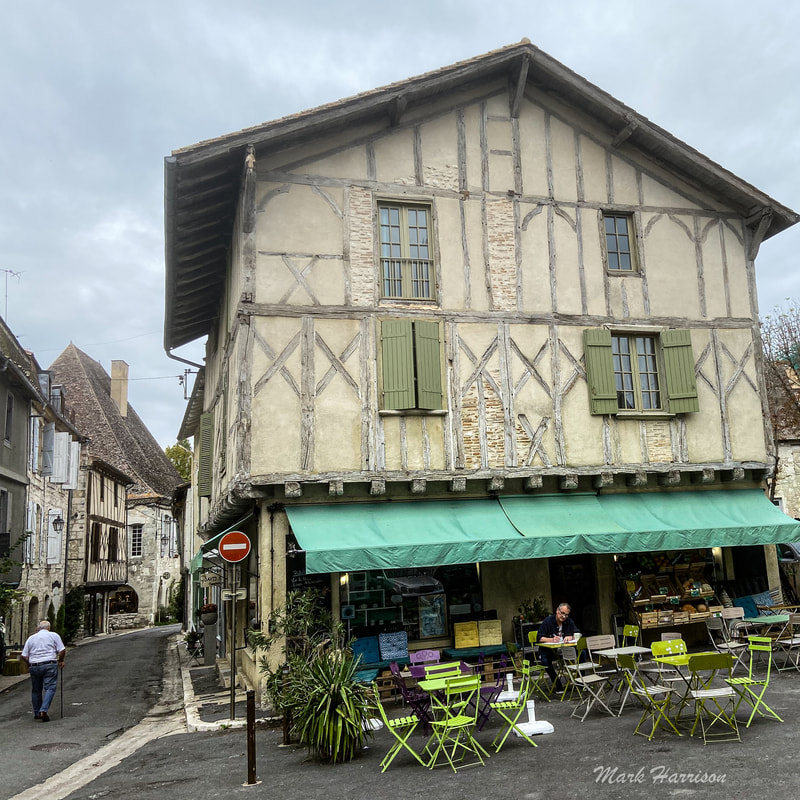





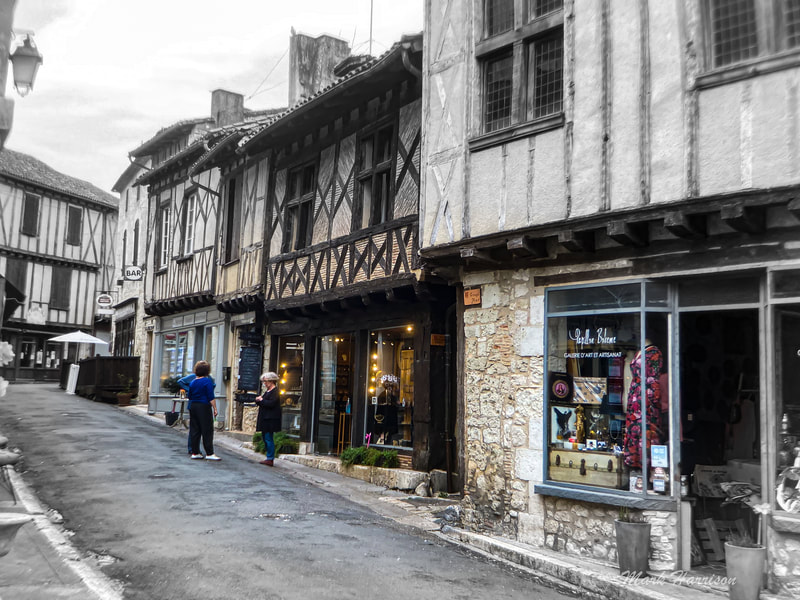
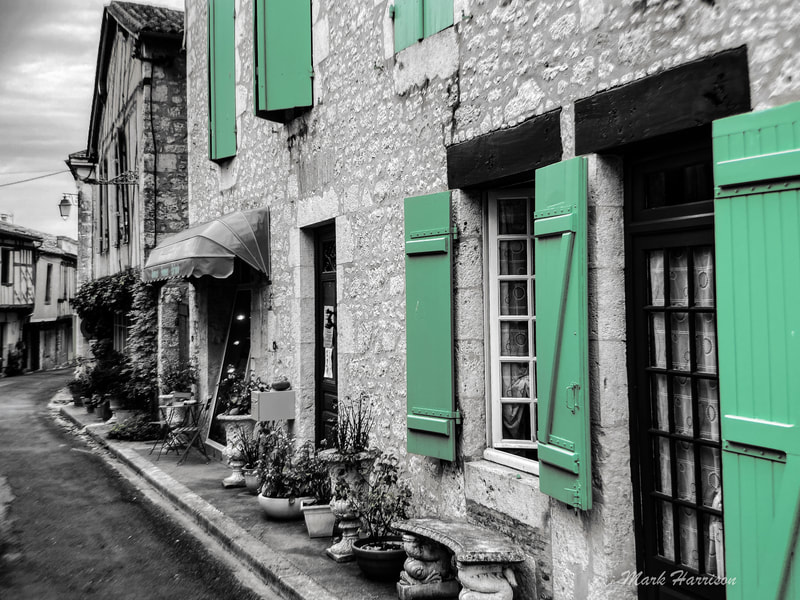











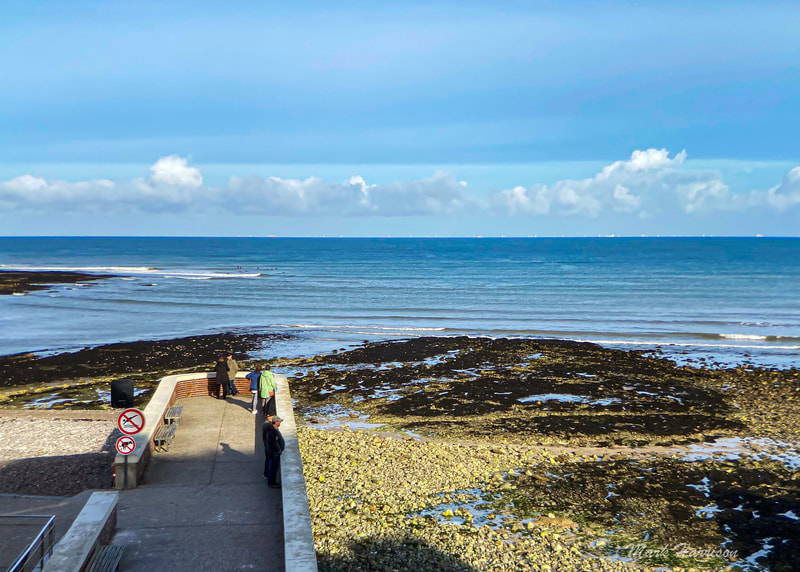











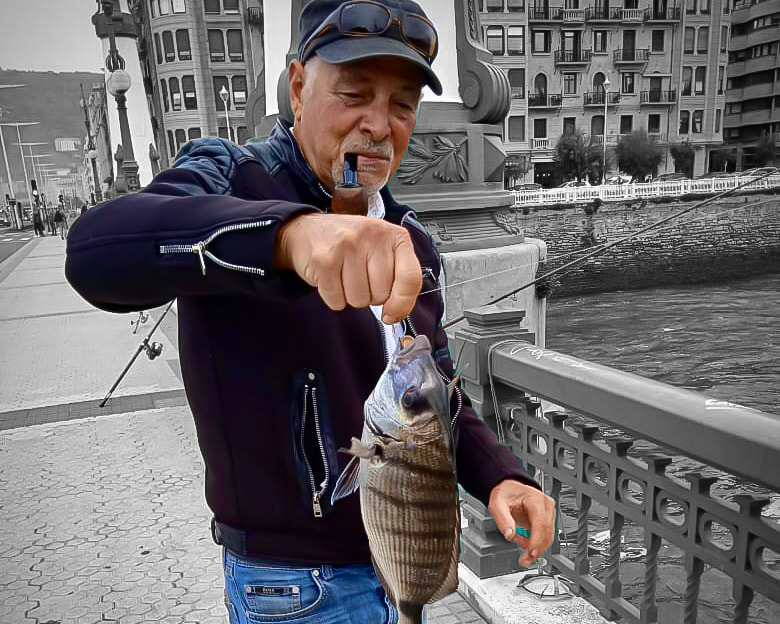














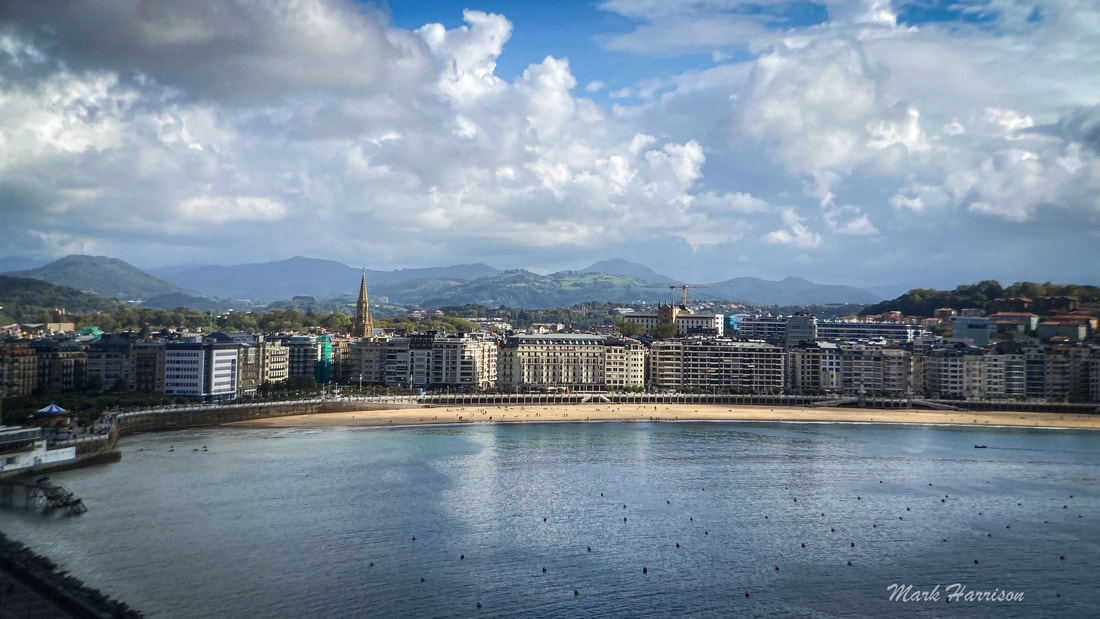











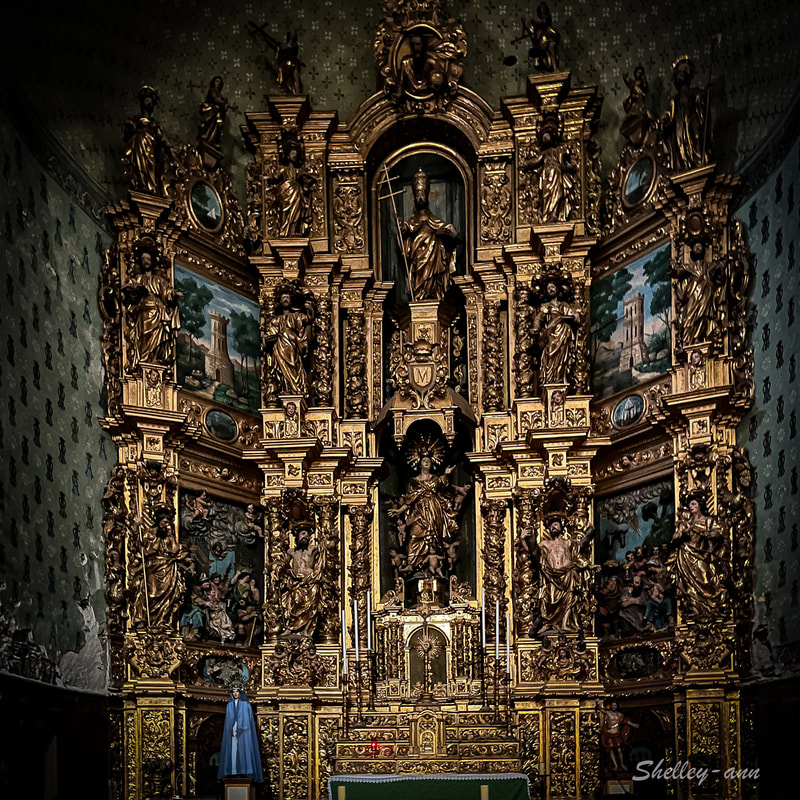

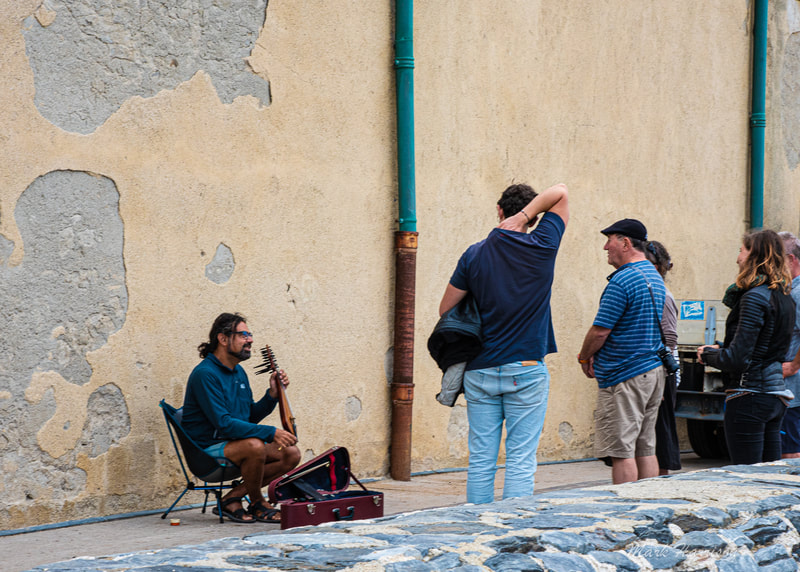

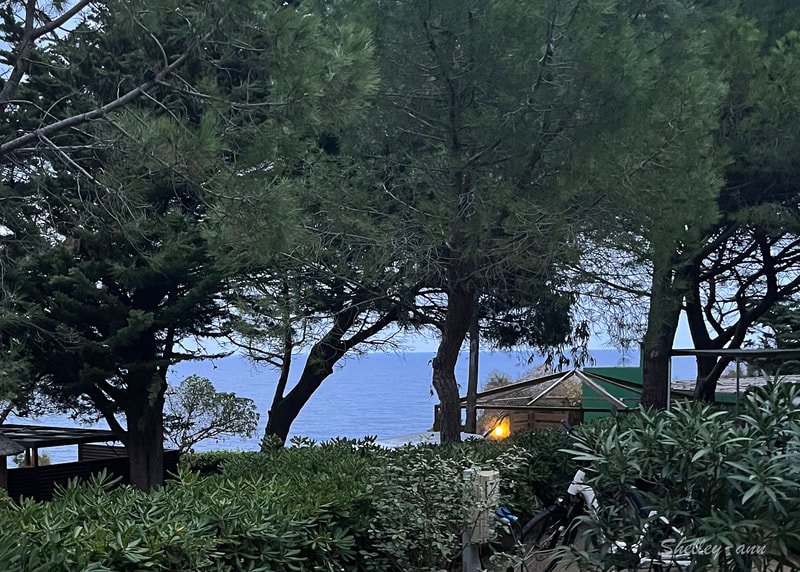



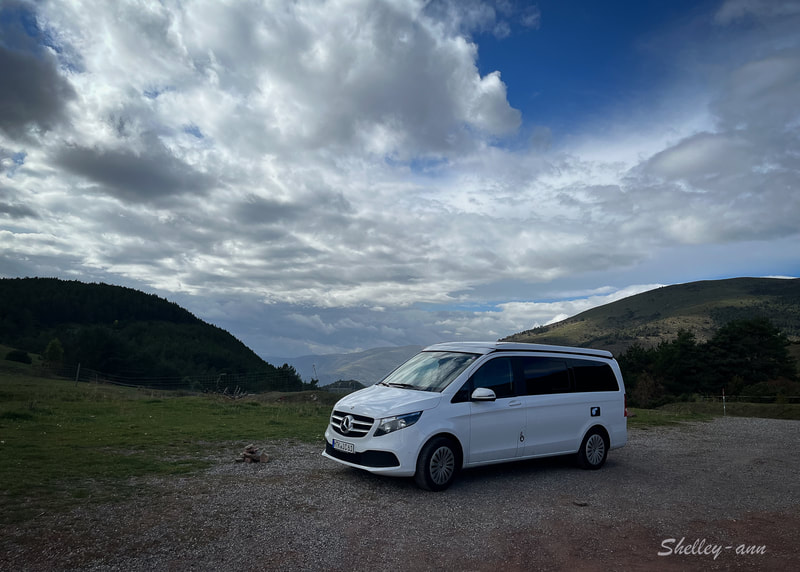







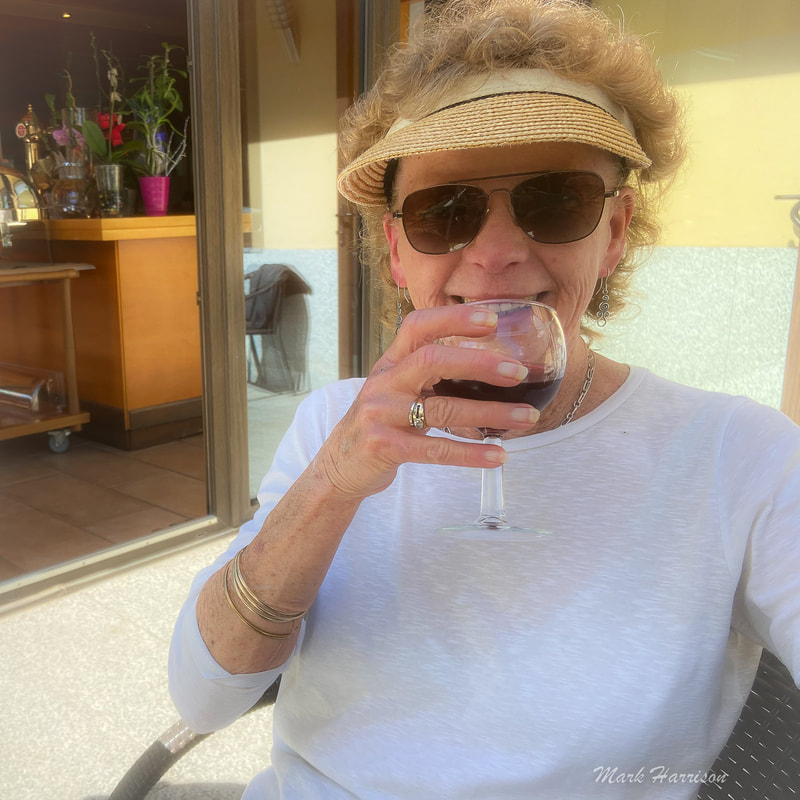










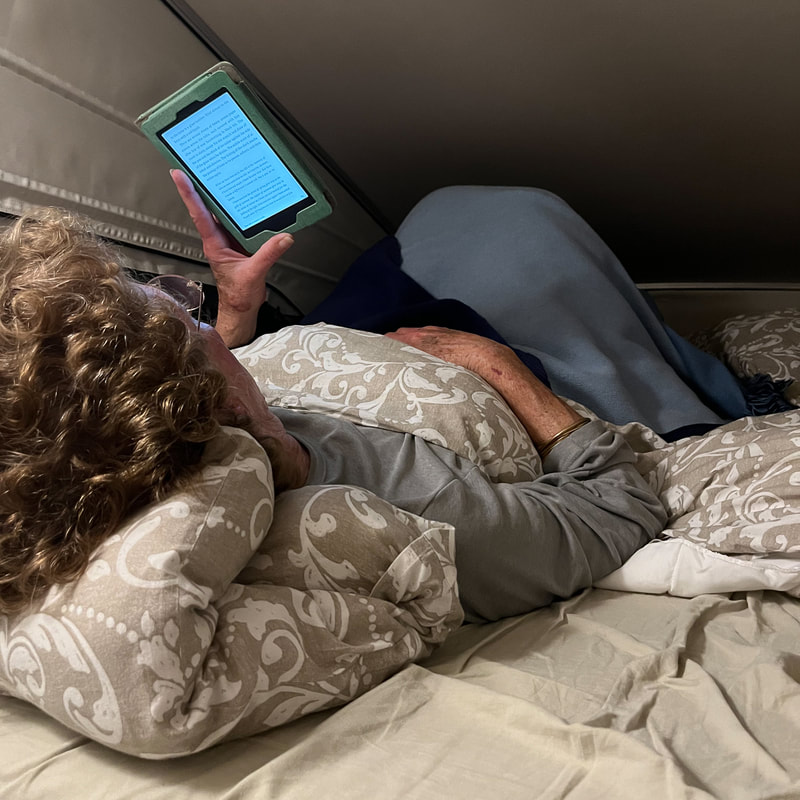




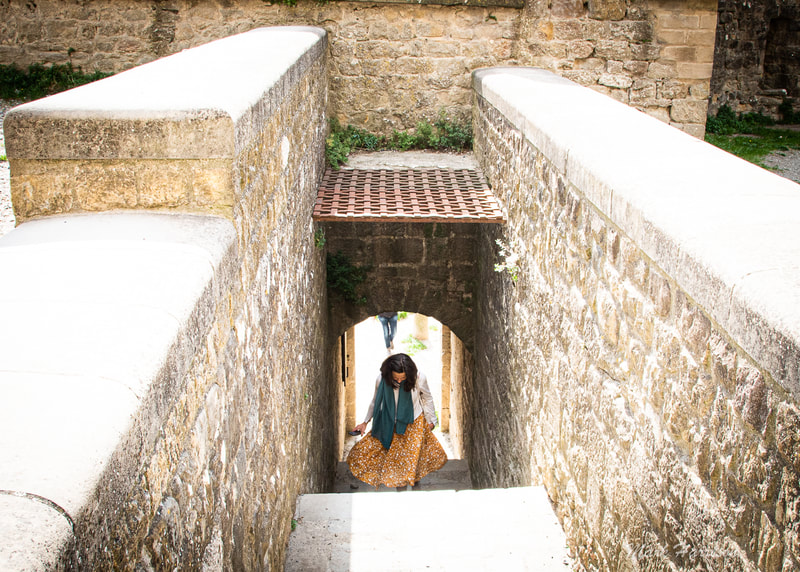
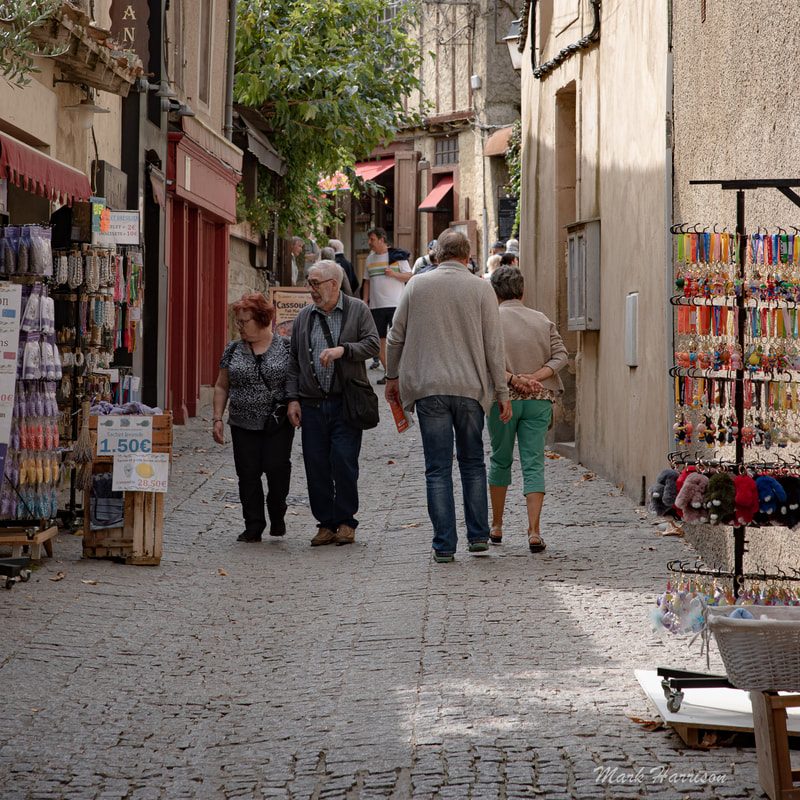


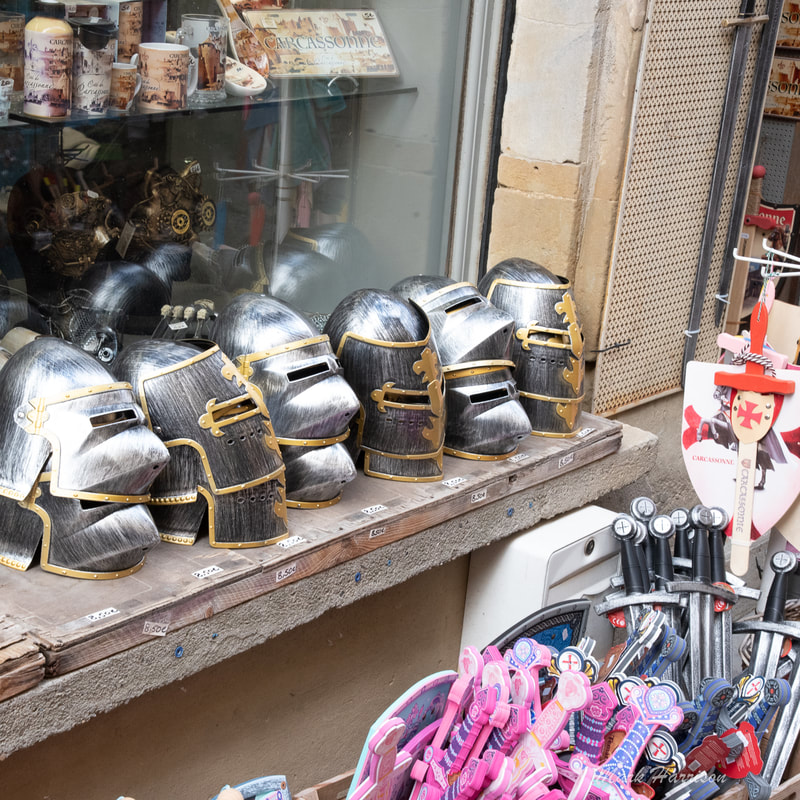


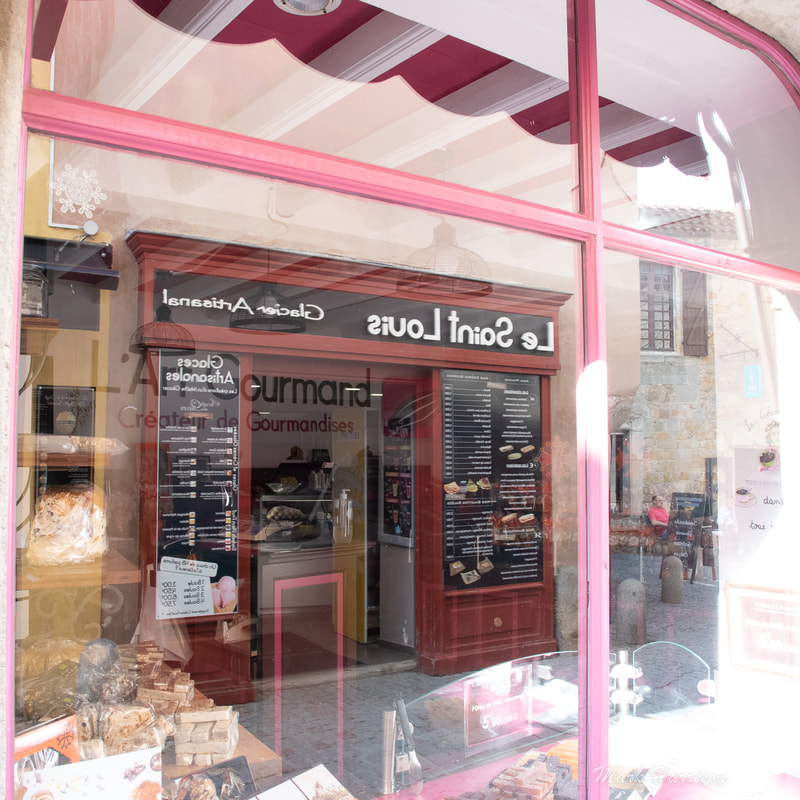


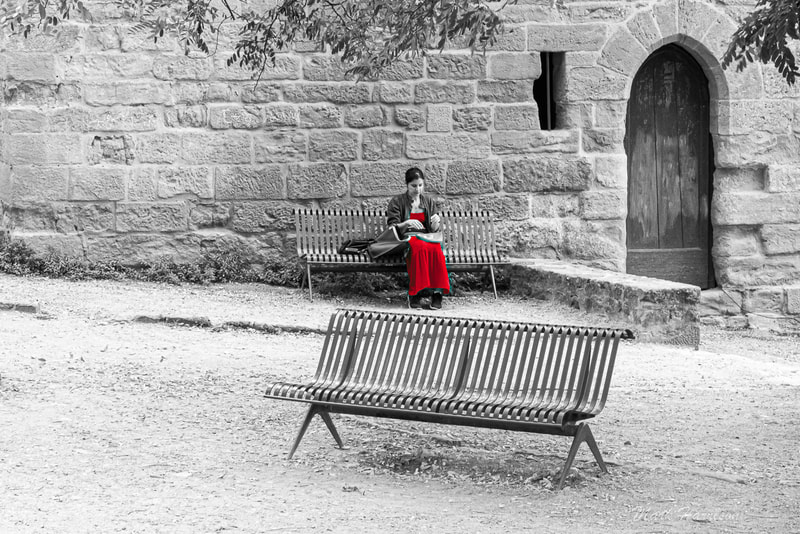










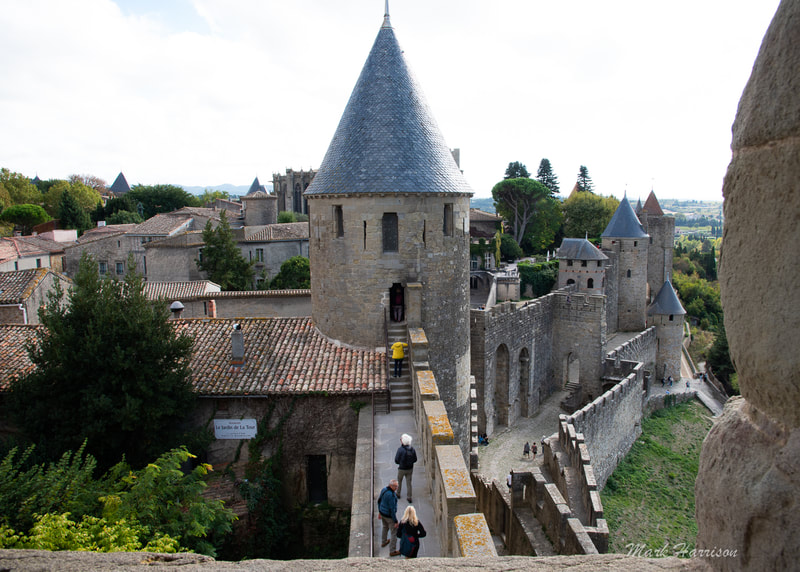




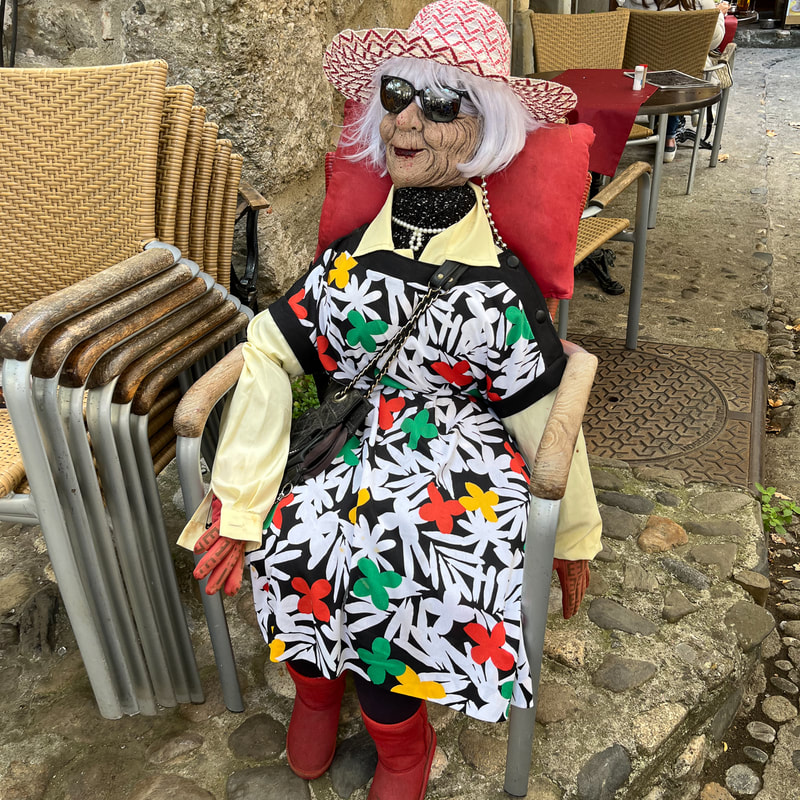




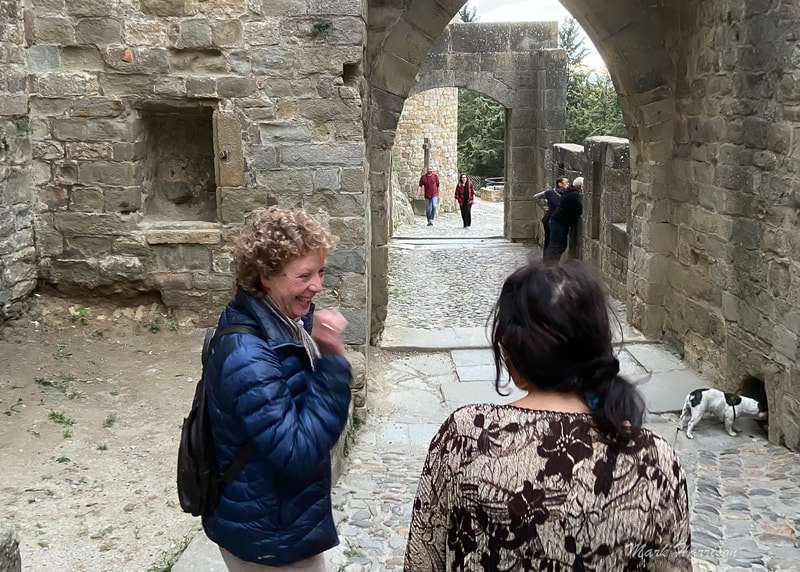
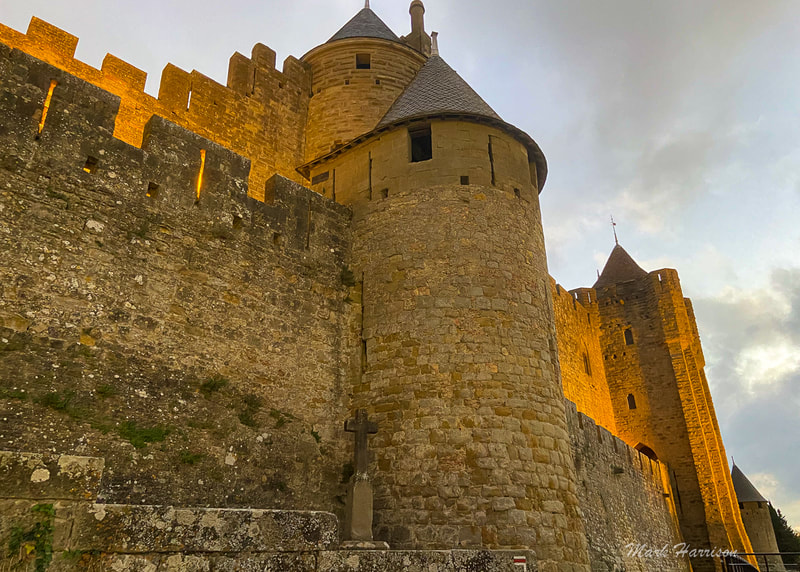
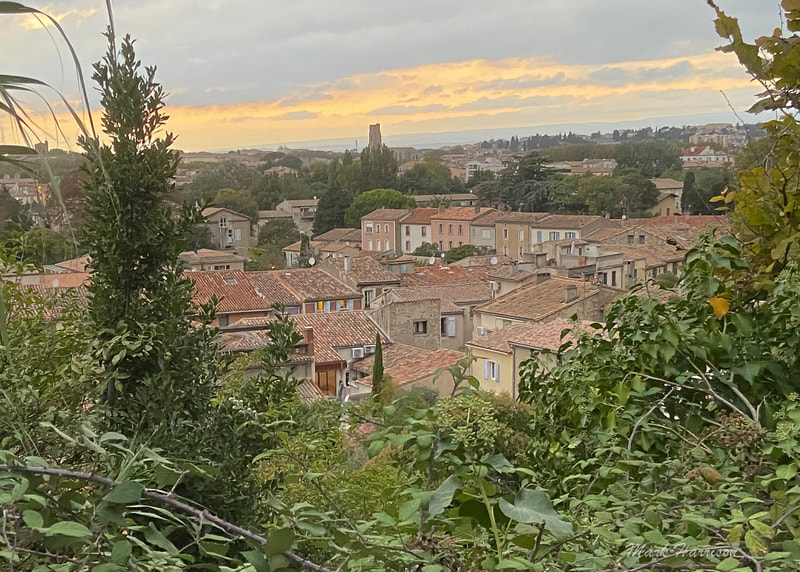


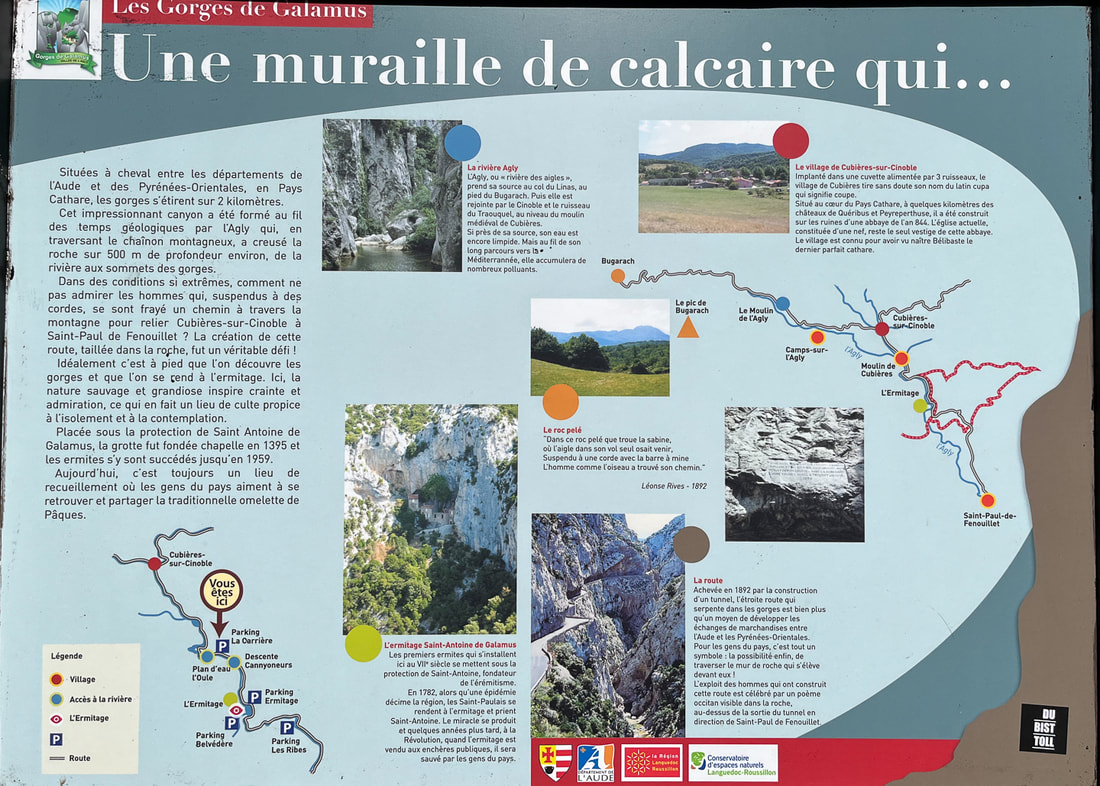


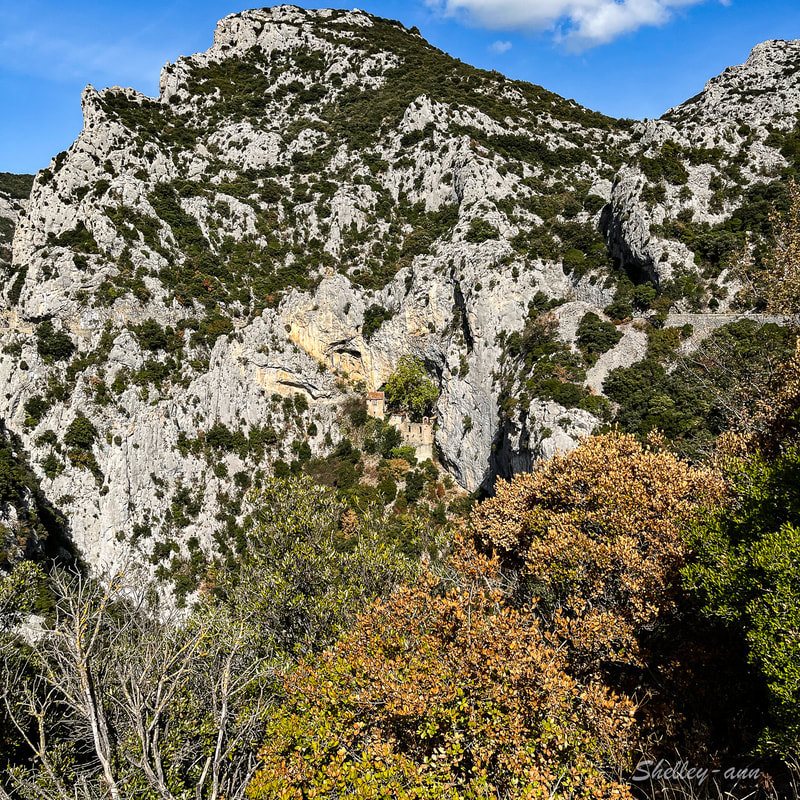

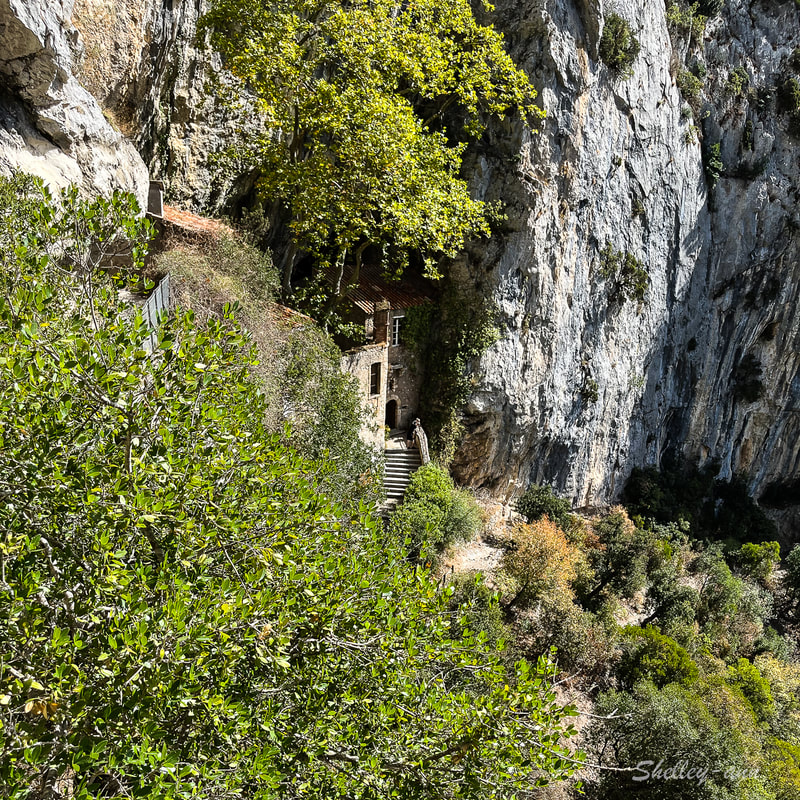











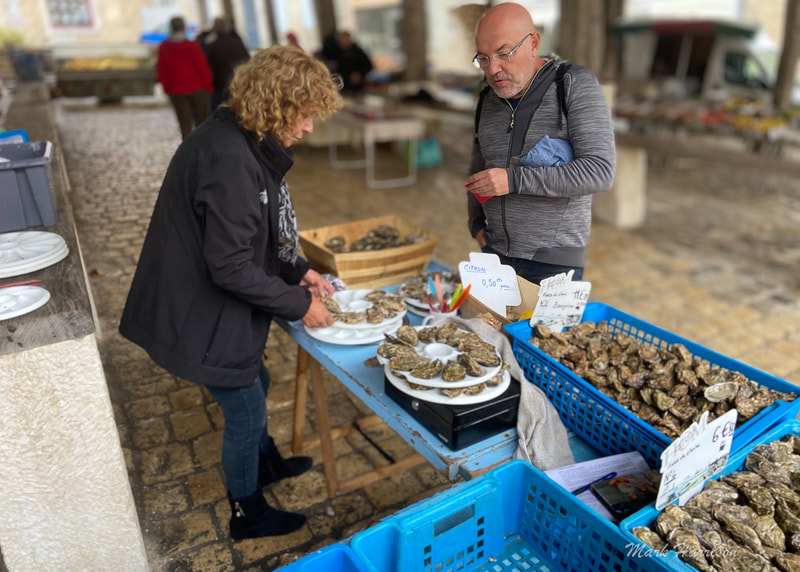








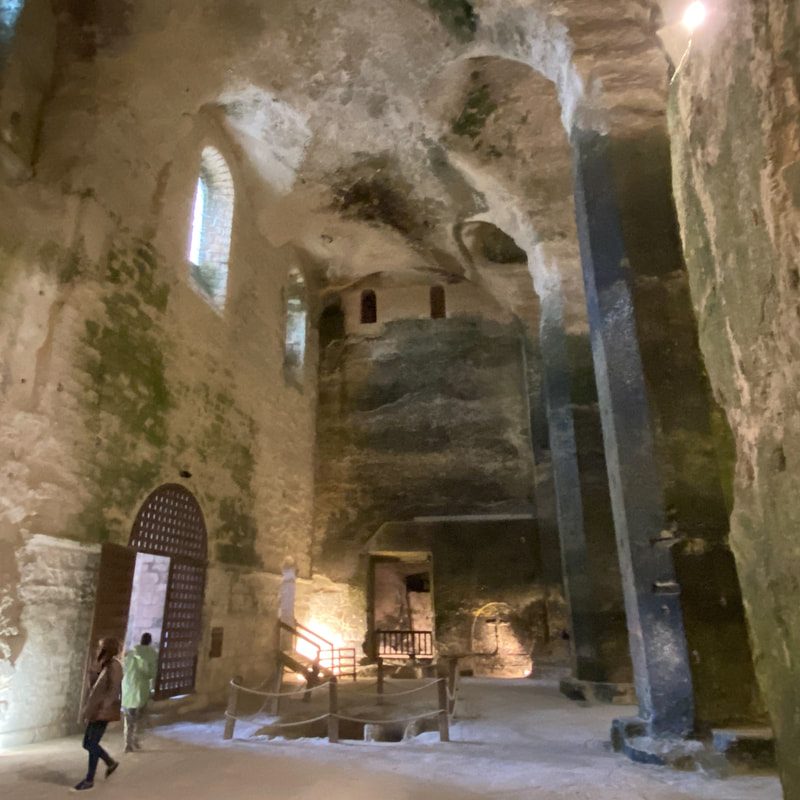


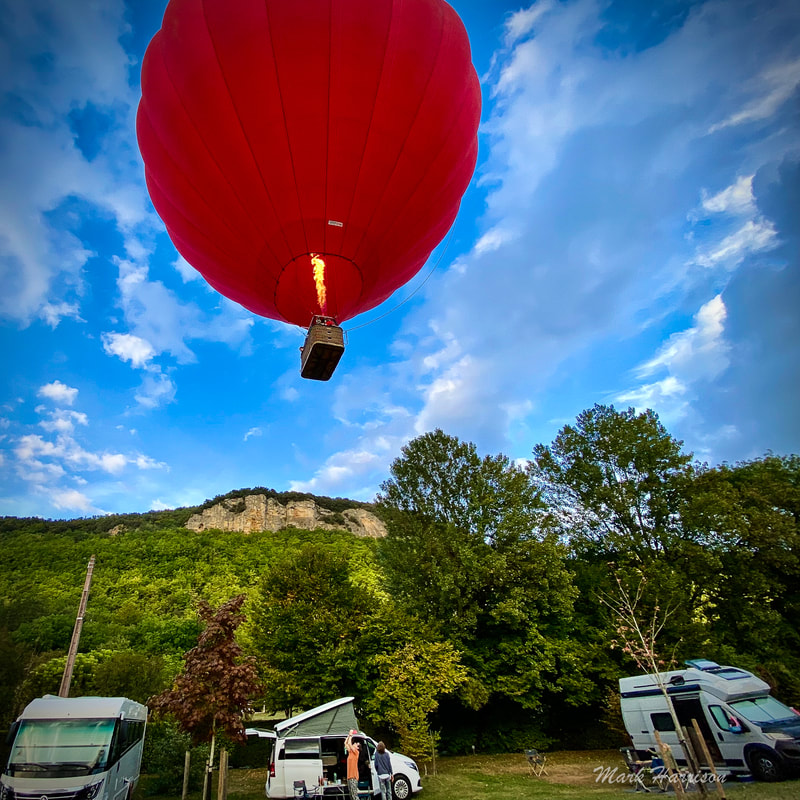






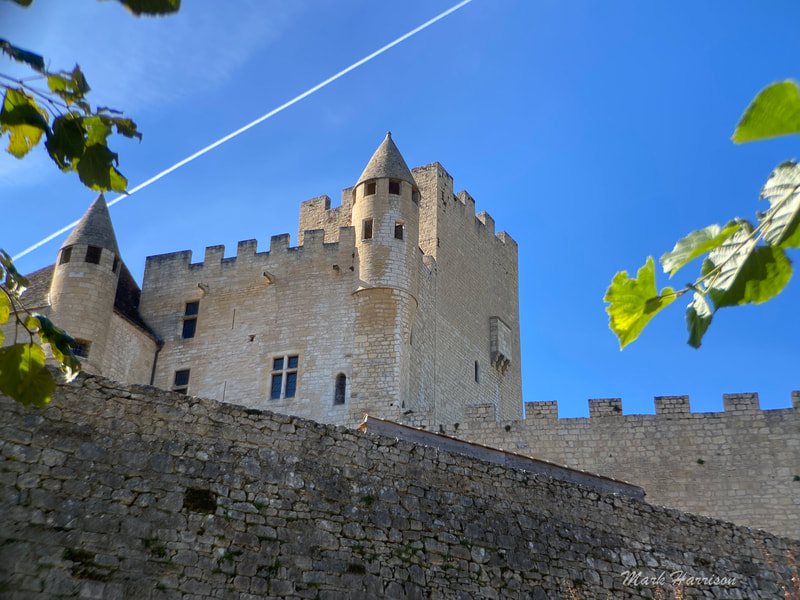




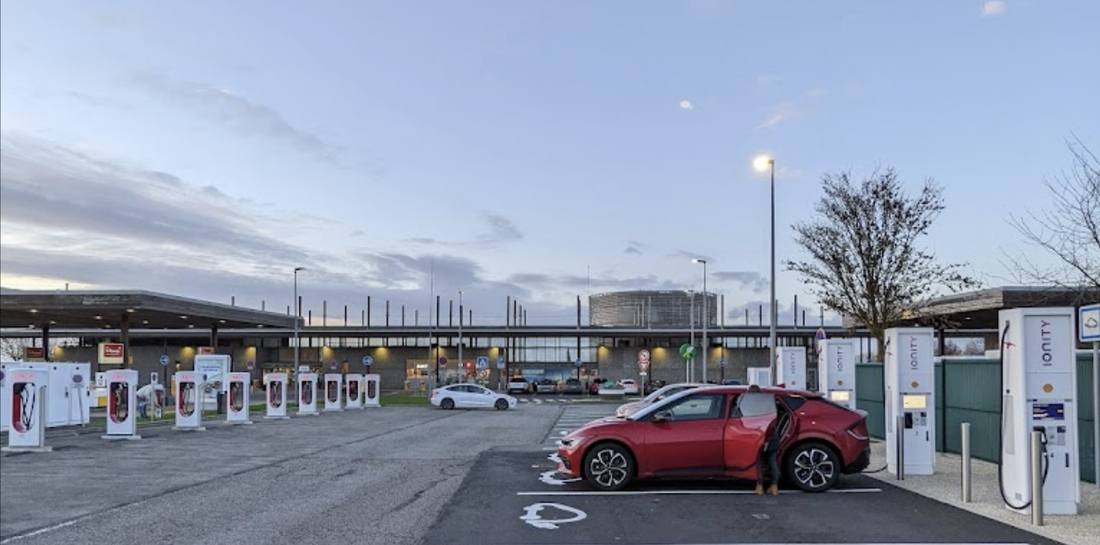


 RSS Feed
RSS Feed